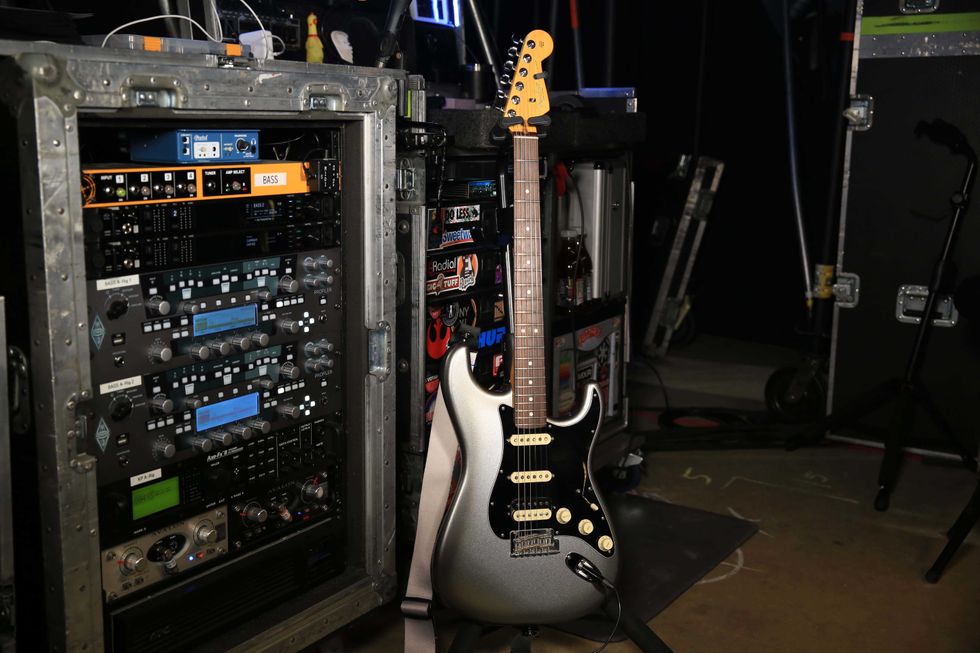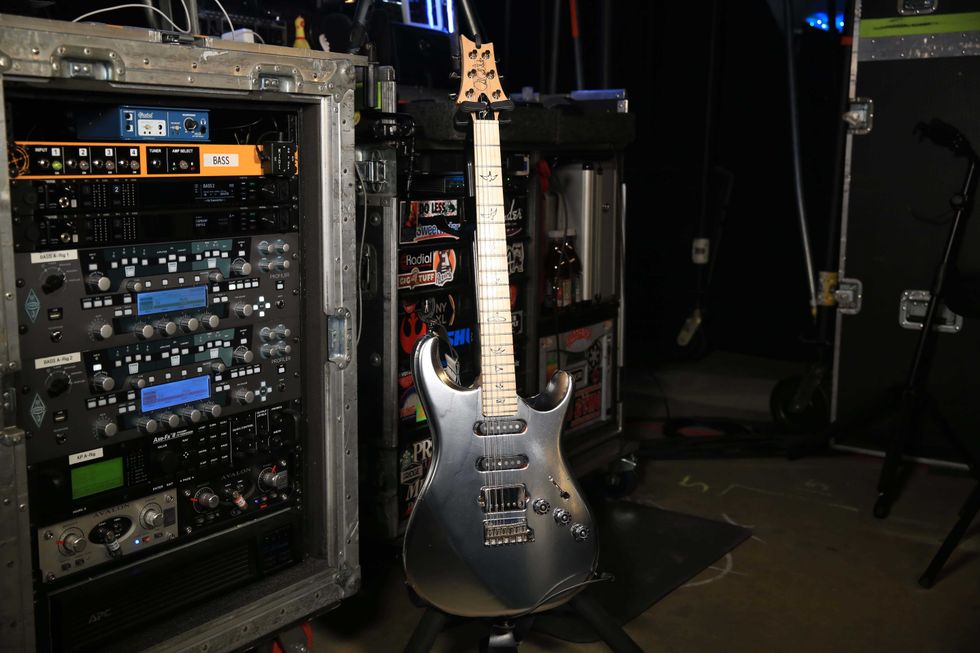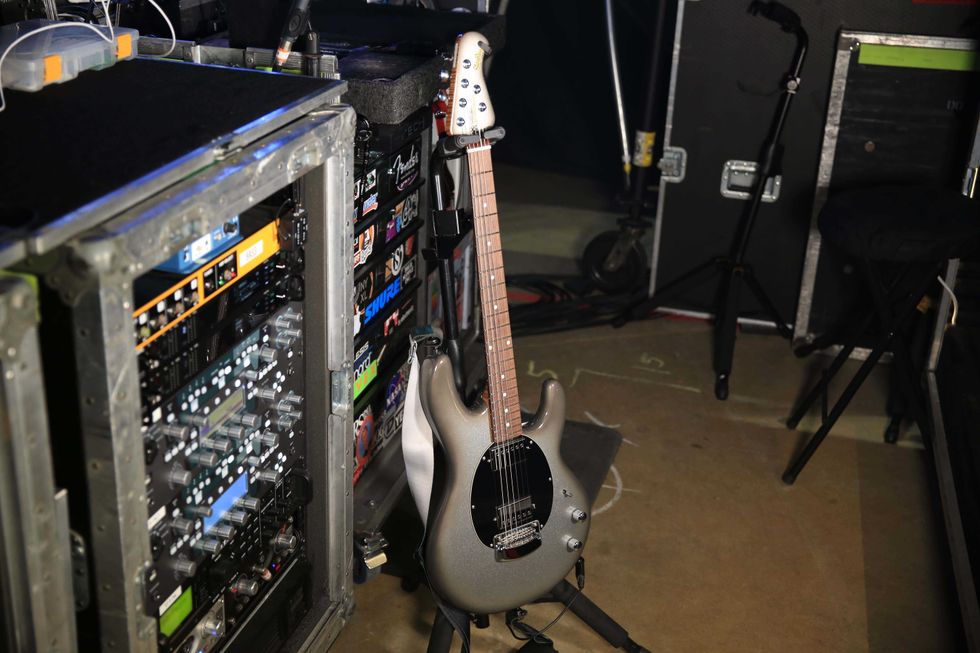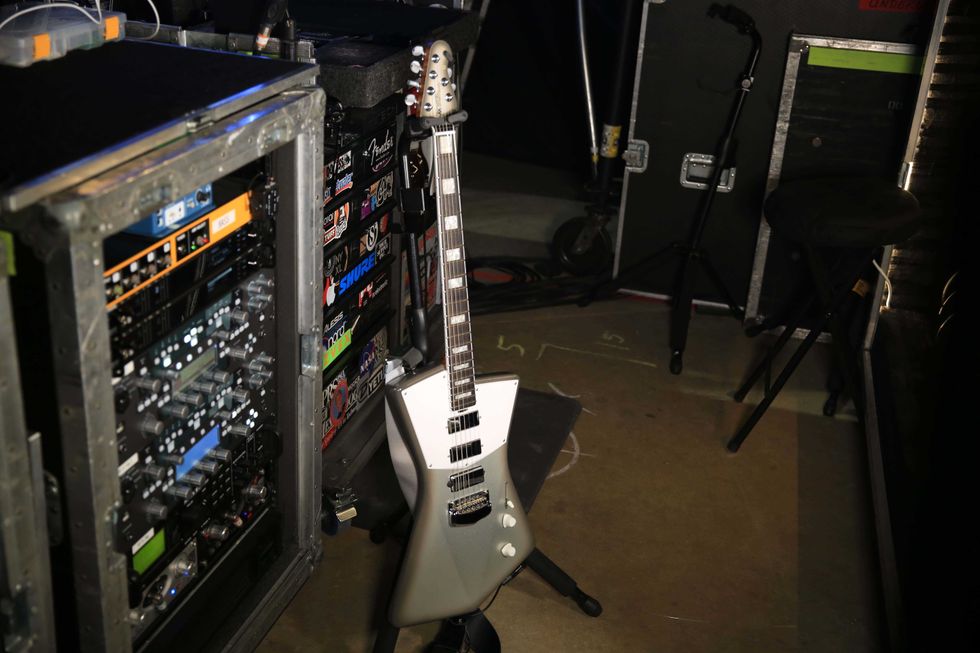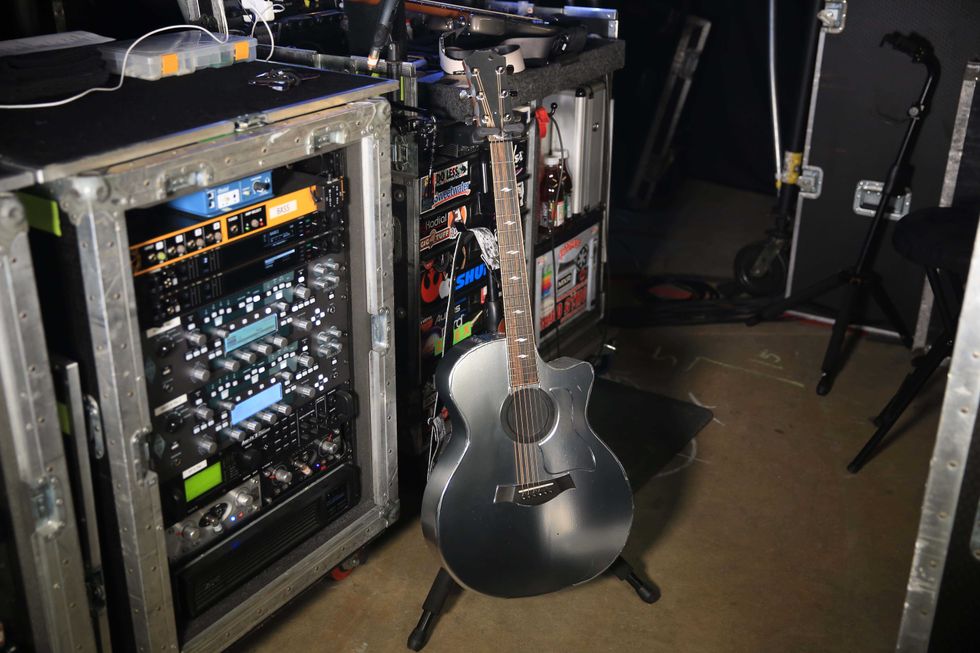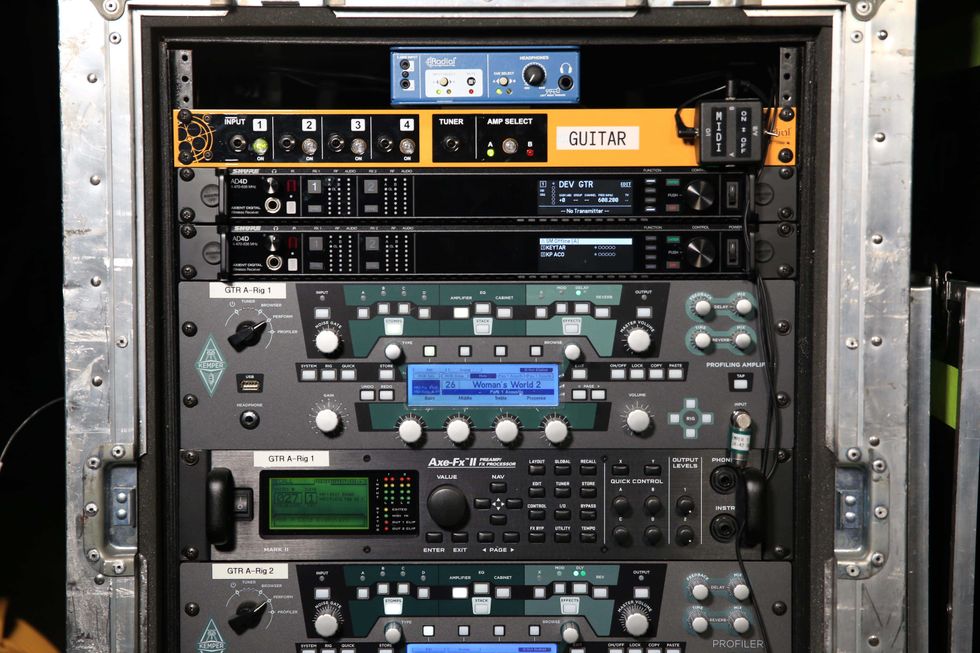|
For TSO, guitar is not an afterthought; it is one of the main courses, and guitarist Angus Clark happily obliges by creating a thick wall of sound. In his eighth year with TSO, Clark has become a staple of the show, blowing audiences away with frenzied renditions of classics like “Flight of the Bumblebee” under showers of pyrotechnics, all while making it look easy. And while Clark admits to being a bit of a Strat aficionado—he plays in a Deep Purple tribute band and has just released a Strat-soaked solo effort entitled Your Last Battlefield—he consistently looks forward to November, when he can strap on a high-powered Jackson and live the big guitar dream.
We caught up with Clark as he geared up for 70 shows over the course of 66 days, stretching from November into the early new year. We talked about preparing for the TSO tour, what it takes to be a true professional, and the definition of heavy.
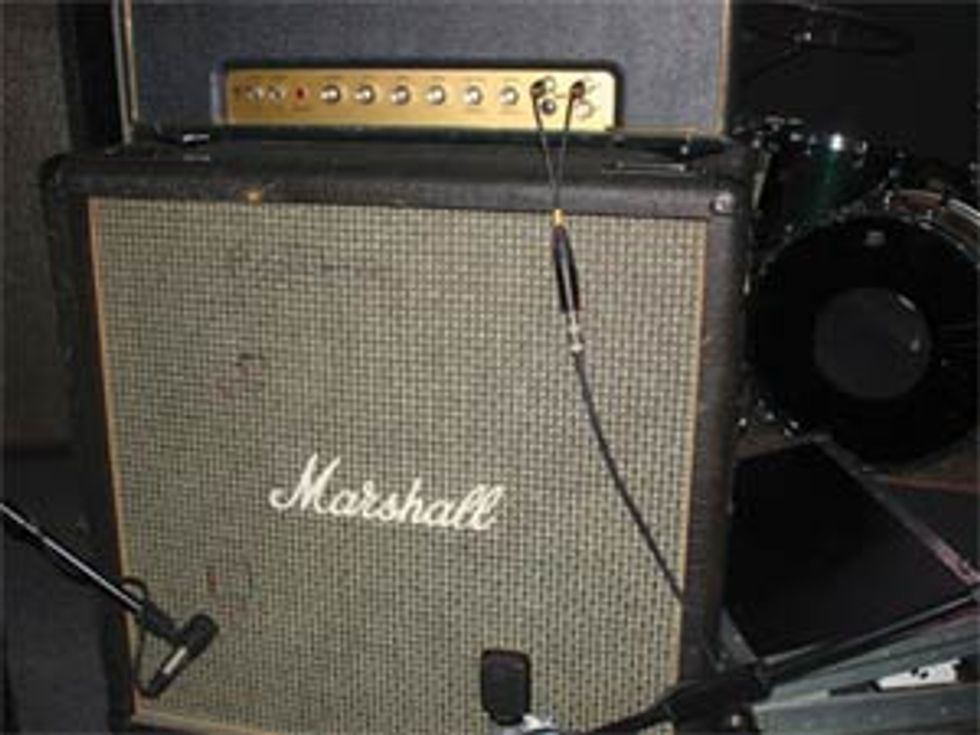 | |
|
I started playing when I was 13; I took lessons in New York where I grew up. At the same time, I was pretty much listening to nothing but Black Sabbath and Pink Floyd. So those would be the two halves of my education: my record collection and my lessons. I went to USC, where I was a music major and from there I came back to New York, went to NYU and got a Master’s in music.
When did you hook up with TSO?
I was living in New York just after completing my Master’s degree, and I got a gig with a band called Naked Sun on a German label distributed by BMG. And we got dropped as soon as I joined the band, which is a classic story [laughs].
We were bound and determined to get a new record deal. So we got in a van and went back to L.A., played some showcases and nothing happened, except that I met a woman who worked for Kitaro, who is a Japanese new age artist. They were looking for someone who could play like David Gilmour, and I basically had the hair, the Strat and the whole thing going on. So I got the Kitaro gig, and I did that for four or five years, from ‘94 until ‘99.
So you were playing new age music?
That era of Kitaro essentially sounds like orchestral space rock. It was like Pink Floyd with no singer.
That sounds unbelievable.
Oh man, it was a great guitar gig. I had huge, long guitar solos with strings backing me up. We played in front of castles in Japan, all over the place. It was phenomenal for me as a guitarist. I’m on five of his records, and four of them were nominated for Grammys.
Here’s where it gets complicated. Marty Friedman worked with Kitaro; he had Kitaro produce one of his solo albums, Scenes. And so Marty would come see the Kitaro shows and we became friends; when Marty left Megadeth, Al Pitrelli [playing with TSO at the time] joined the Megadeth and TSO called Marty to see if he was interested in doing the tour. He wasn’t available, but he said, “I know another guy in New York,” and they called me. It’s only six degrees of separation [laughs].
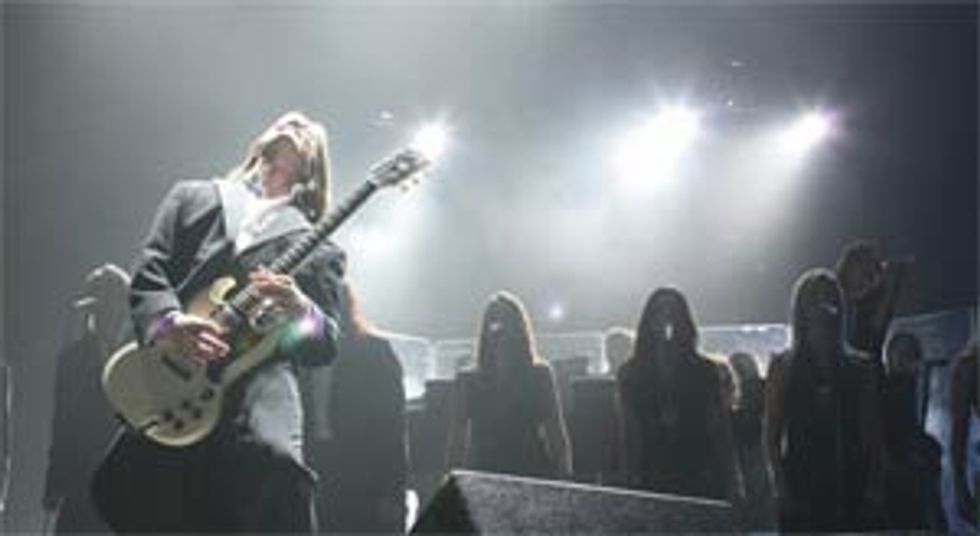 | |
|
There were a couple auditions, and there were a bunch of really good guys there. There were definitely guys there that are more technically proficient than I am, but the nature of getting any gig—well, any gig like this one, at least—is being a good performer.
You’ve gotta be able to play the stuff, number one, but then you’ve gotta perform the material, and I had a proven track record of that. I toured the world for five years; I knew how to get along with guys on a bus. You bring all of that with you to the audition.
What is it like playing on such a well-known spectacle of a show? Most players will never experience playing in front of a wall of pyrotechnics.
It’s intense; you think, “How the heck did I get here?” And I’ve had that experience more than once. When I was first with Kitaro, they flew me to Japan and they set me up on a stage with a huge PA rig, and I’m playing all this Pink Floydinspired stuff, and they’ve got this mirror ball—it’s just like I’m on the Dark Side of the Moon tour. I couldn’t fathom it.
The last two years of the TSO tour, we’ve been using a scissor lift stage—it looks just like the things that KISS would ride. I was like, “I can’t believe this!” I just commend Paul O’Neil and TSO for wanting to do that level of production, because it’s a family show, and a rocker can bring his kids and enjoy that level of production without having to worry about the content of the show.
How does the style of TSO compare to the projects that make up the rest of your year?
The rest of the year I’ll do my record, which is very Strat heavy, a Blackmore-meets-Tony Iommi-meets-Gilmour kind of thing, and then I’ll play in my Deep Purple tribute band, which I love, because we only do MK III material, not the “Smoke on the Water” stuff. Then TSO time comes and I’ve got the Jackson Randy Rhoads model on and a rack of doom [laughs]. But when I’m making my record, I’m just using my 50-watt plexi. Some of the cuts are just the guitar straight into the amp, which is the best sound in the world.
How do you develop the tone you use with TSO? Is it left to your discretion, or is there someone saying, “This is what I need you to sound like.”
There’s a specific notion of what it’s all supposed to sound like, and you have to be in the range of that. That’s part of the reason I use a POD, in case someone says, “I really need this to sound like this,” they can just pass the preset over to me. The only thing is that we’re all different—the tone comes from your fingers, so what I need to get from an amp, in order to get the right sound for TSO, is different from what Chris Cafferty or Alex Skolnick has to do to get the right tone. But so long as at the end of the day you get it, that’s mission accomplished.
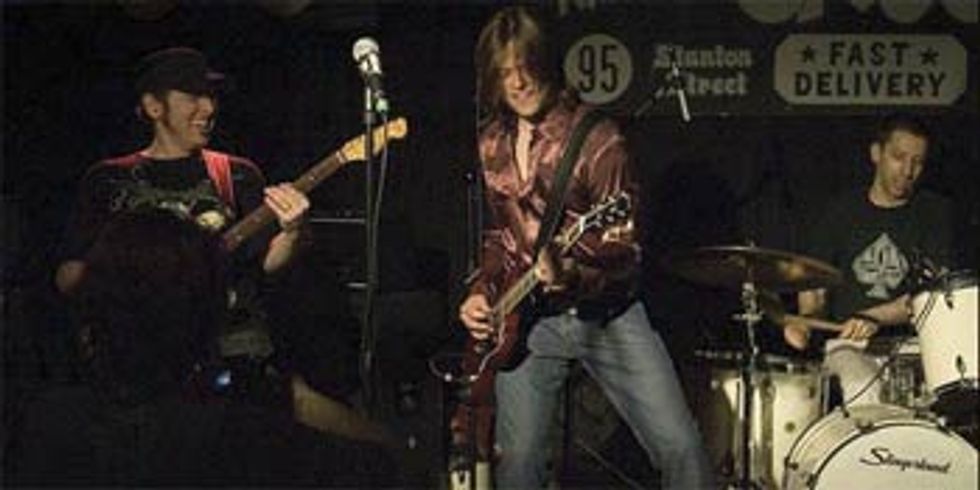 | |
|
I do, I use it all the time at home. I just did this solo on this new Metal Church record, and I composed it at home with the POD; then I went into my rehearsal room and cut it at deafening volumes with my plexi. You can’t underestimate to what degree the POD changed the game, in terms of just being able to work on things. I’m amazed by that stuff.
You’ve created some massive tones for both TSO and your solo work; are there any particular secrets you’ve discovered for creating that?
Well, two things. One is the 50-watt plexi, a 1987X. That to me is where it’s at. As for lead, in a studio here in Brooklyn—because I gotta represent Brooklyn—called Sweetfire, there’s this a 100-watt head, but it’s a JCM 800 that actually has a channel switching function and reverb on it. I don’t remember what the model number is, but that was like the JCM 800 lead tone, right out of the box, just the way you want it.
So your tonal secret is pretty much just “get a Marshall.”
[laughs] And then get a good guitar and put DiMarzio pickups in it.
Go on to the next page for more with Angus, plus his gear box.
Do you like scooped tones?
Not really. It’s so funny; you listen to Randy Rhoads—a big influence for me—and he’s got a lot of high-end and midrange snot in there. That scooped thing just gets too much pick attack.
What about dropped tunings?
Well, here’s another secret of tone: heavy strings and high action. I like having my Strat—the main Strat I’m using now is a ’62 reissue—tuned to Eb, and it has a set of D’Addario strings on it that goes from 11-52. I just realized that I wasn’t getting enough sound, and someone introduced me to a hybrid set with the 52 on the bottom. When I started detuning to Eb and D, I moved to 11s.
D’Addario makes a set of 11-52s now. Because you know the kids love to drop tune those guitars.
What do you think of those that drop to notes like C to be heavy?
Crazy notes, but there’s some of that early Sabbath where he’s got a low C# on the guitar, and he was playing eighths on a Gibson scale guitar!
What’s funny about that early Sabbath stuff is that every now and then I’ll notice a sound coming out of my plexi, and I’ll listen and say, “Is it supposed to do that?” Then I’ll put Black Sabbath on and I’ll hear that same sound, and I’ll say, “Okay, my amp is fine.” [laughs] I’ll be worried until I confirm it with Sabbath.
Your MySpace page says, “A new breed of guitar hero...”
A new breed of American guitar hero [laughs].That’s a tagline I got from Al.
What does it mean?
Well, this gets off the TSO track, but I just think that... if you start from Eddie Van Halen and move to guys like Yngwie—and I’m an immense Yngwie fan—you had that whole look and style just raining down on everybody for five or ten years. And all the guys that made their names then still have a profile, this real gravitas to who they are. But chops guitar is coming back. Bands like Dragonforce are on Guitar Hero and everyone’s interested in technical playing. And so I just think it makes room for a new generation of guys who can make their names in that realm of guitar, and I’m all for it.
You’re gonna have a new breed. John 5 is an amazing player; Bumblefoot is amazing. These guys are throwing down with the best of them, and they’re able to make their own names. It’s not like, “Oh man, you weren’t there then, so you don’t get to be a guitar hero.” We’re making room for guitar heroes again, and I think that’s a great thing.
| Angus’s Gearbox When Angus takes the stage with TSO, here’s what he’s caroling on.
|
Angus Clark
Trans-Siberian Orchestra
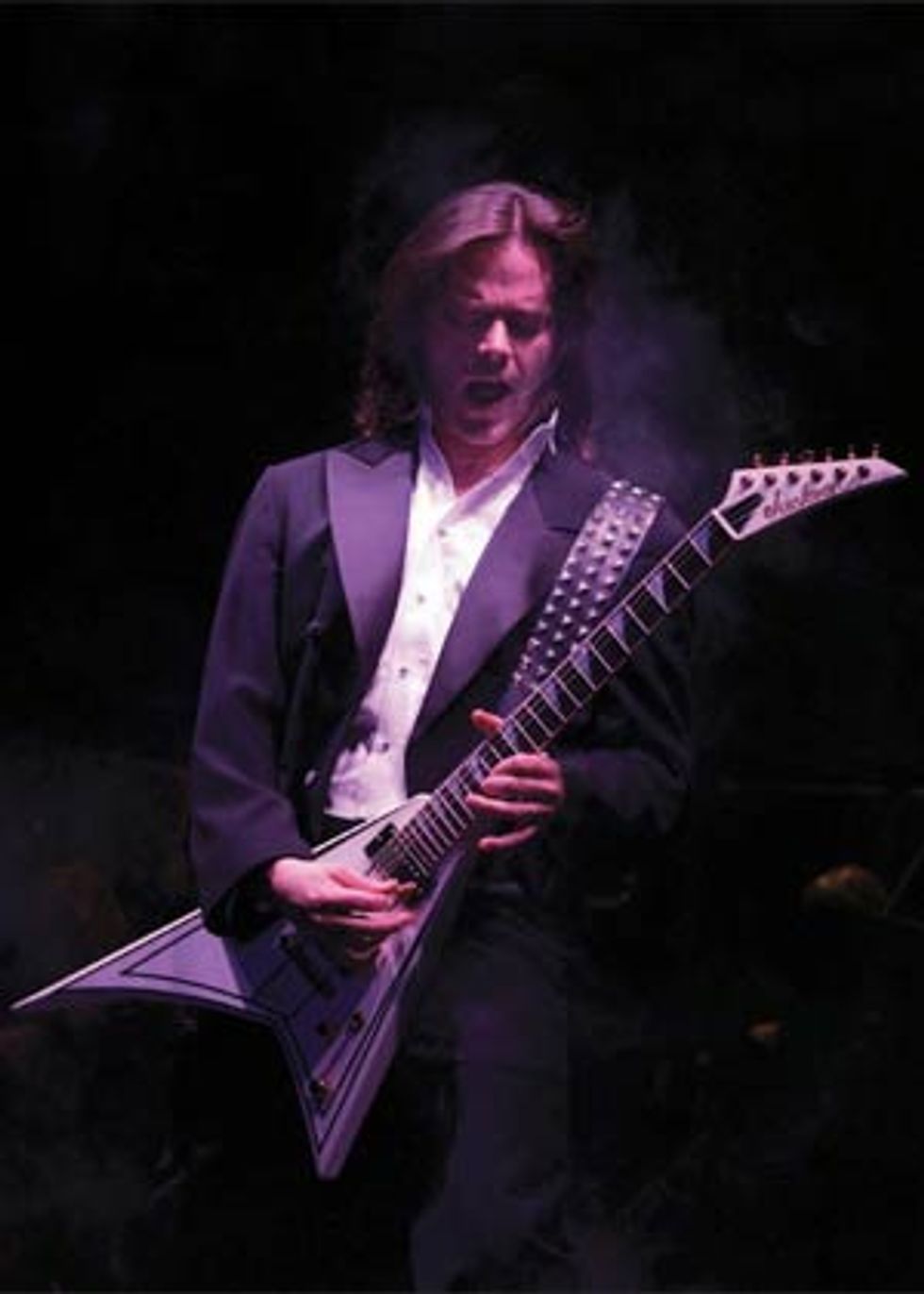
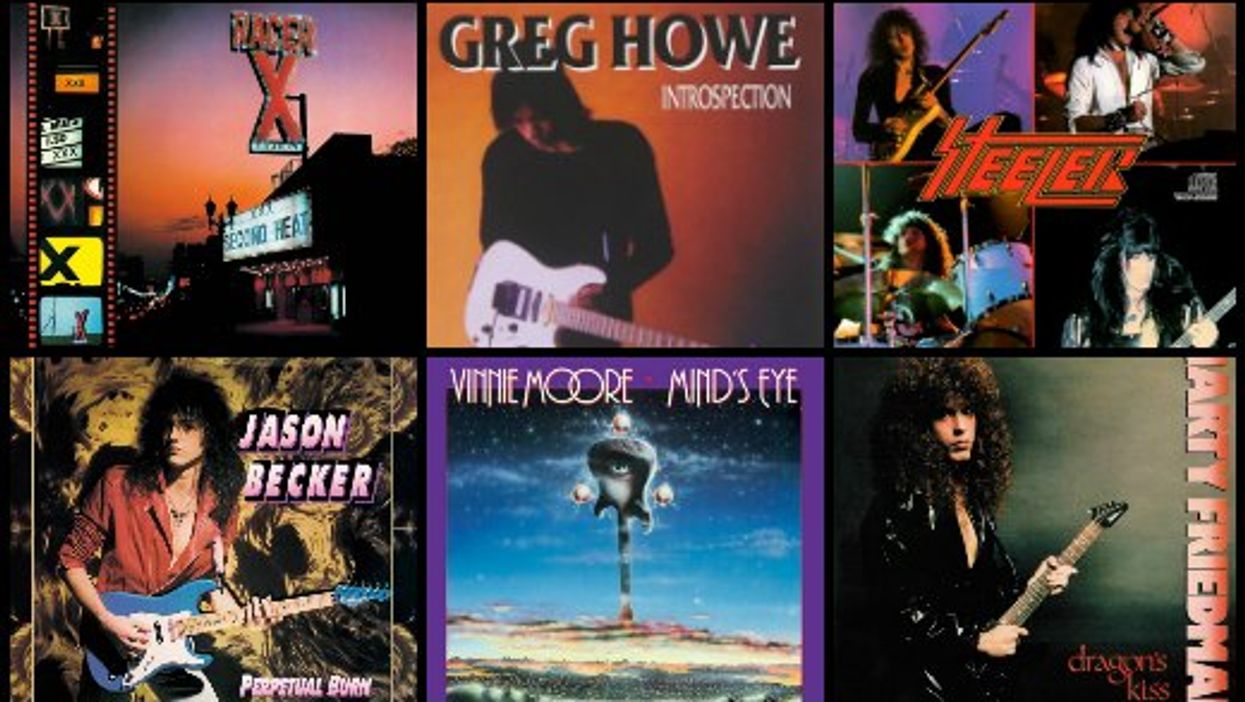
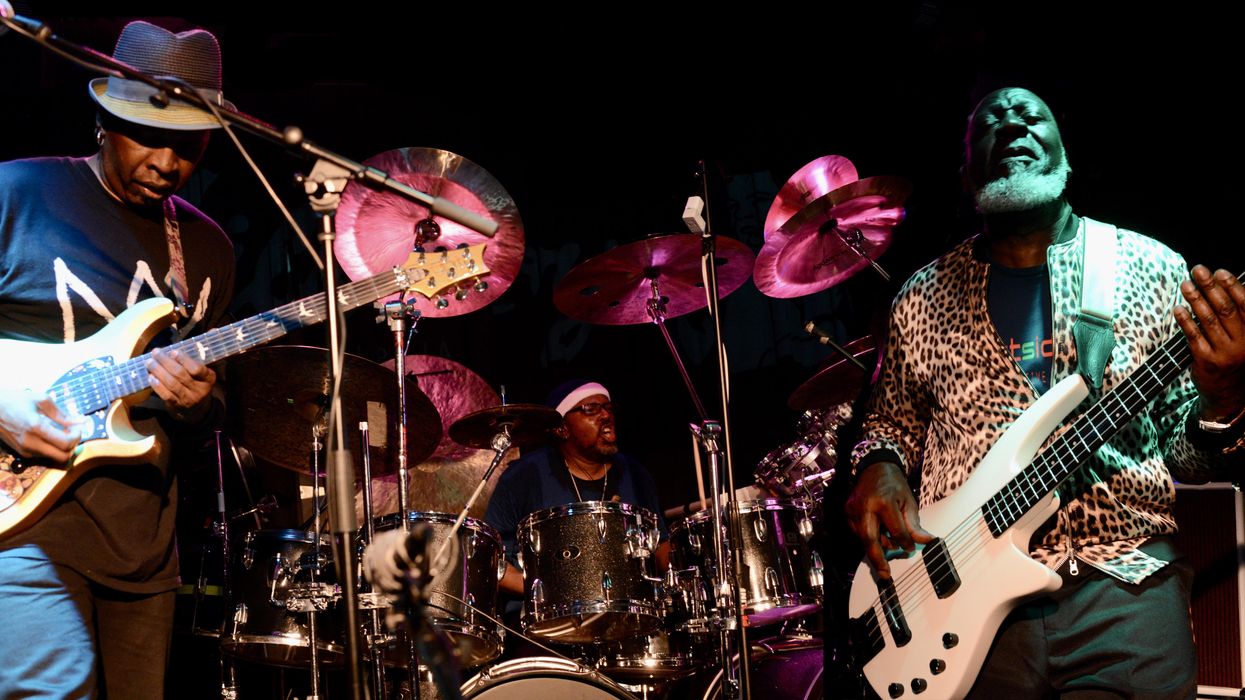


![Rig Rundown: AFI [2025]](https://www.premierguitar.com/media-library/youtube.jpg?id=62064741&width=1245&height=700&quality=70&coordinates=0%2C0%2C0%2C0)
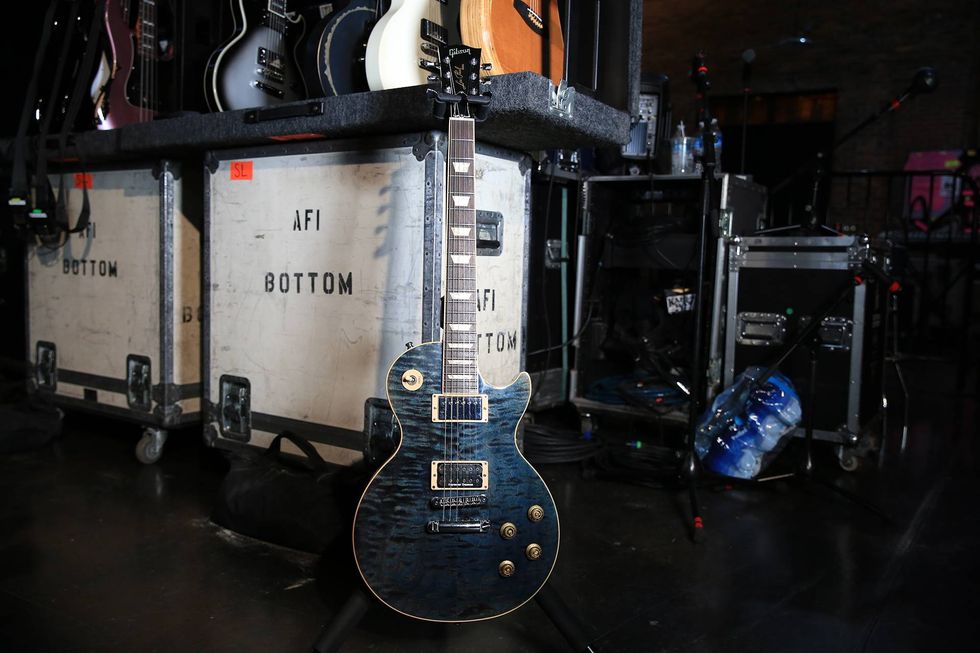
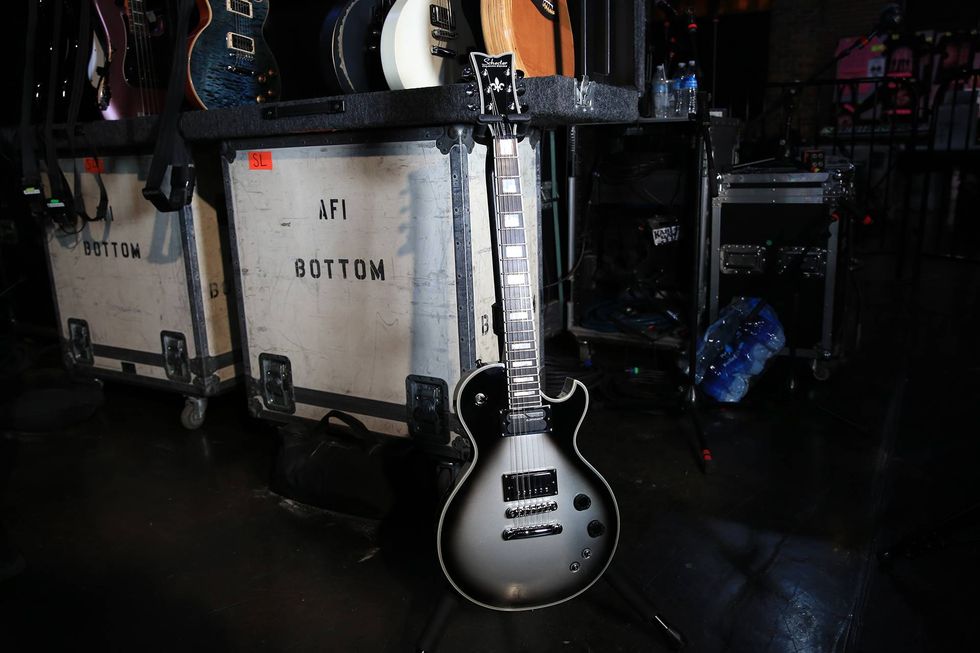
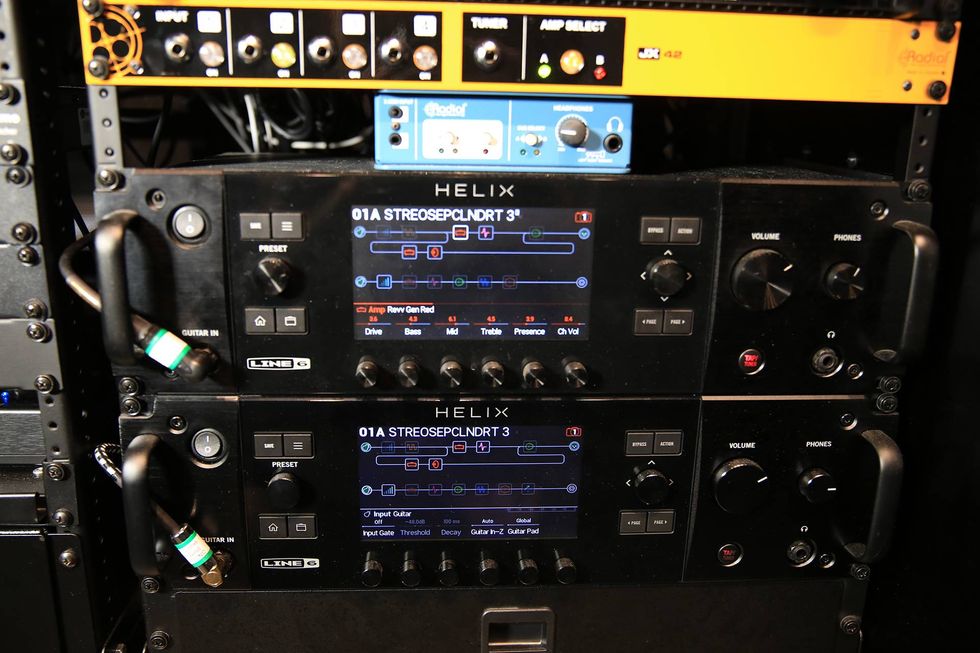
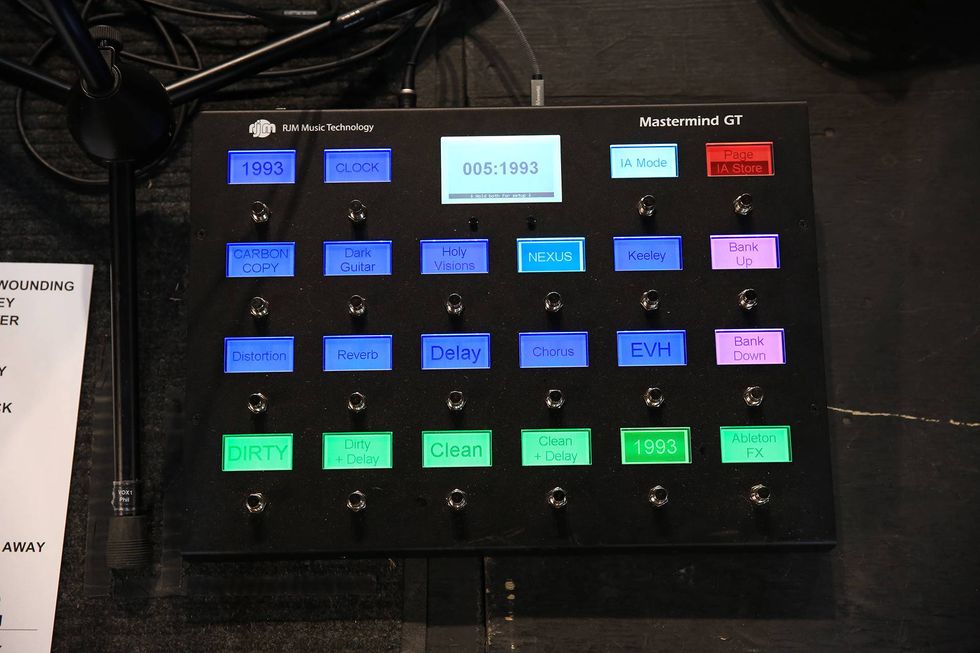
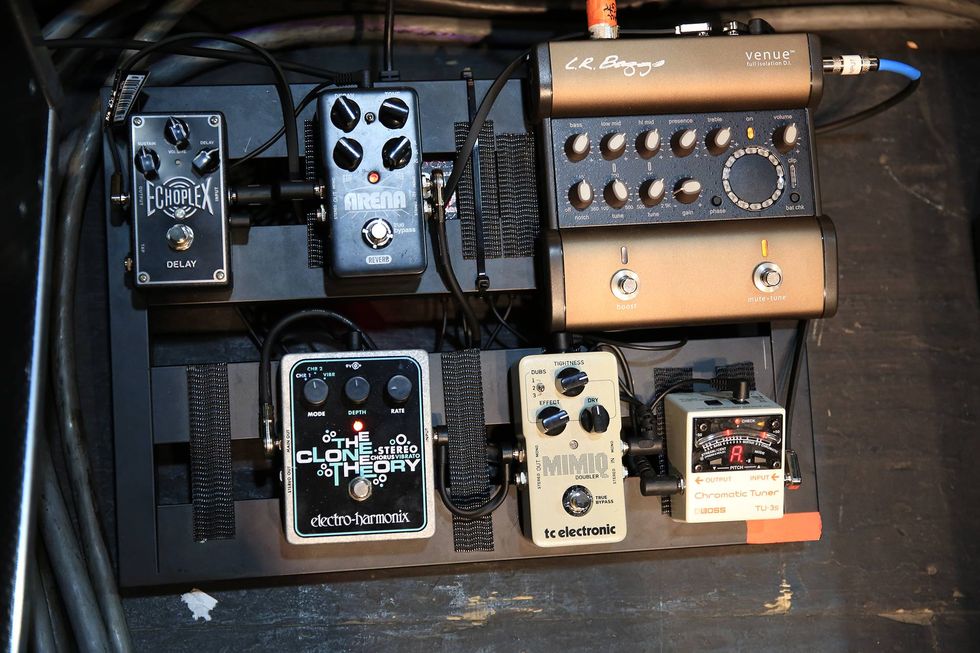
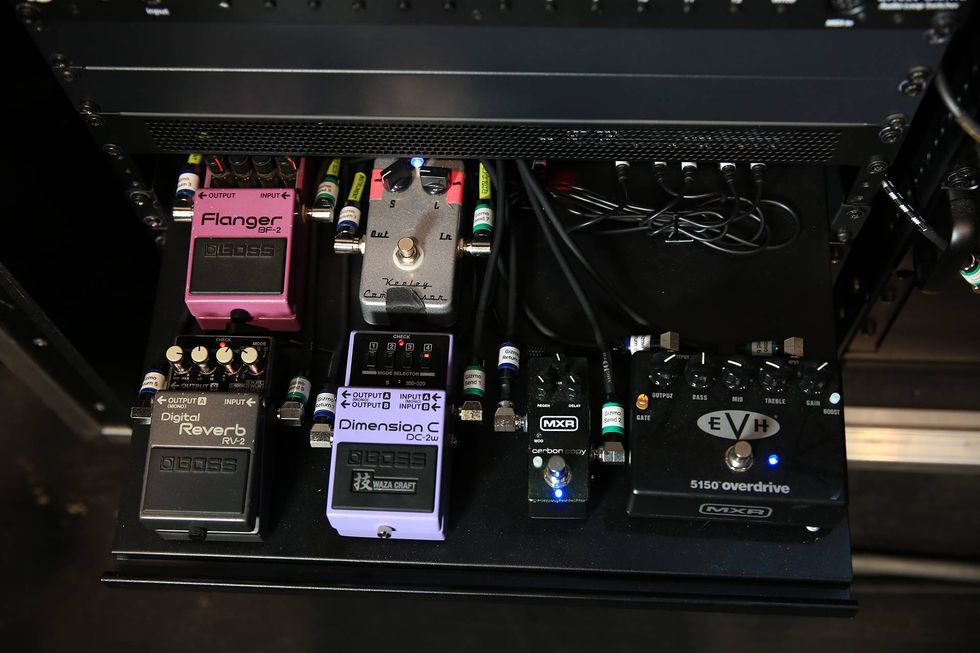
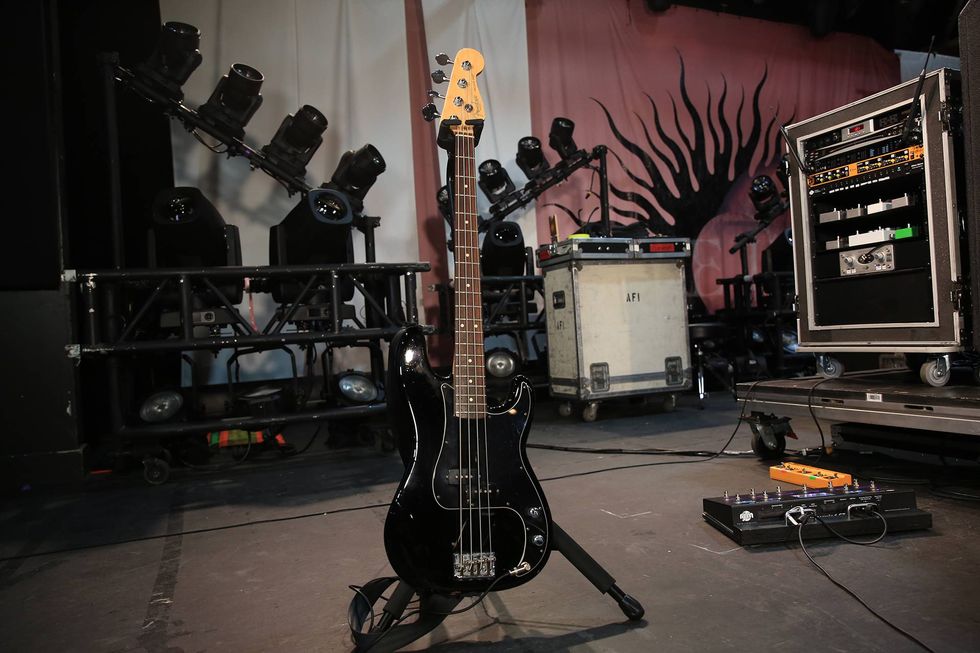
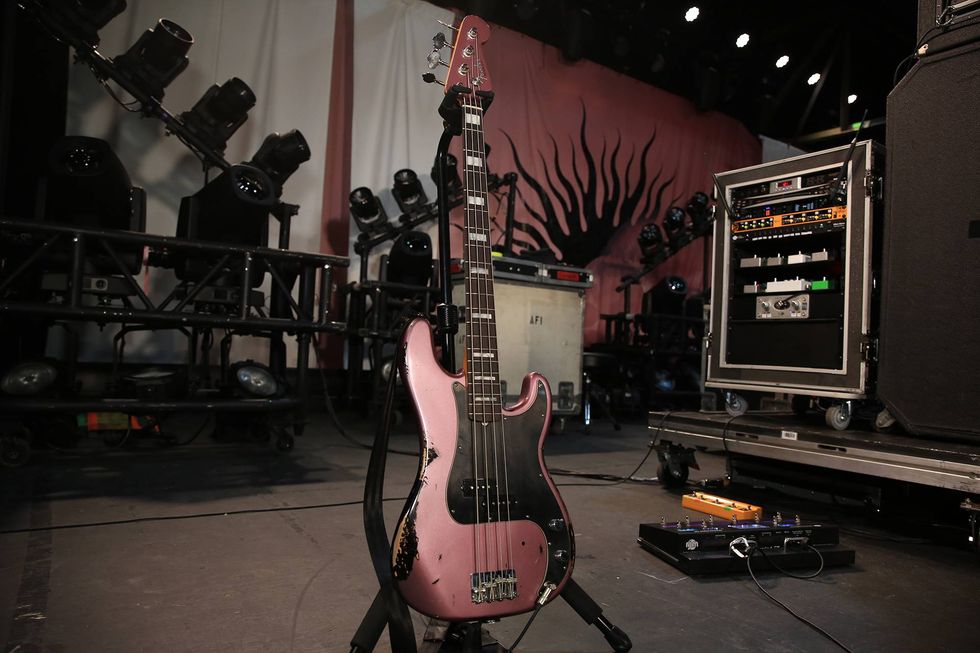
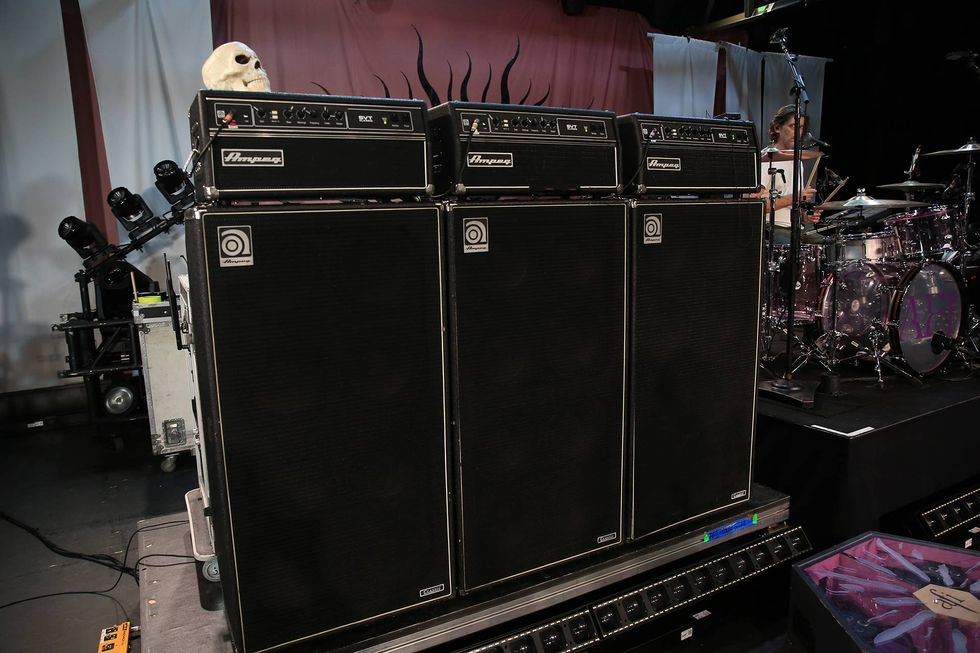
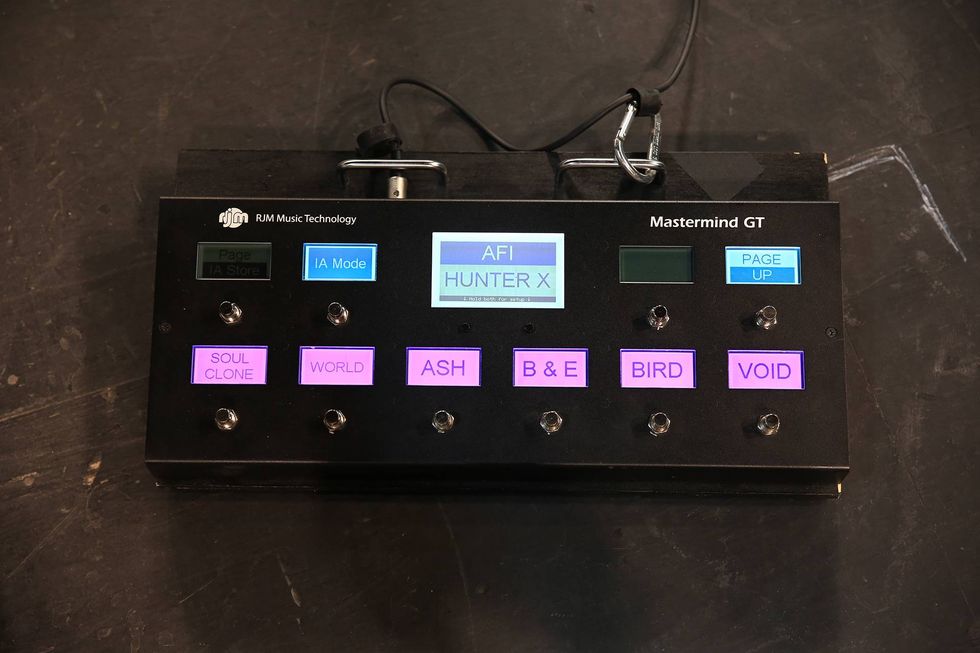
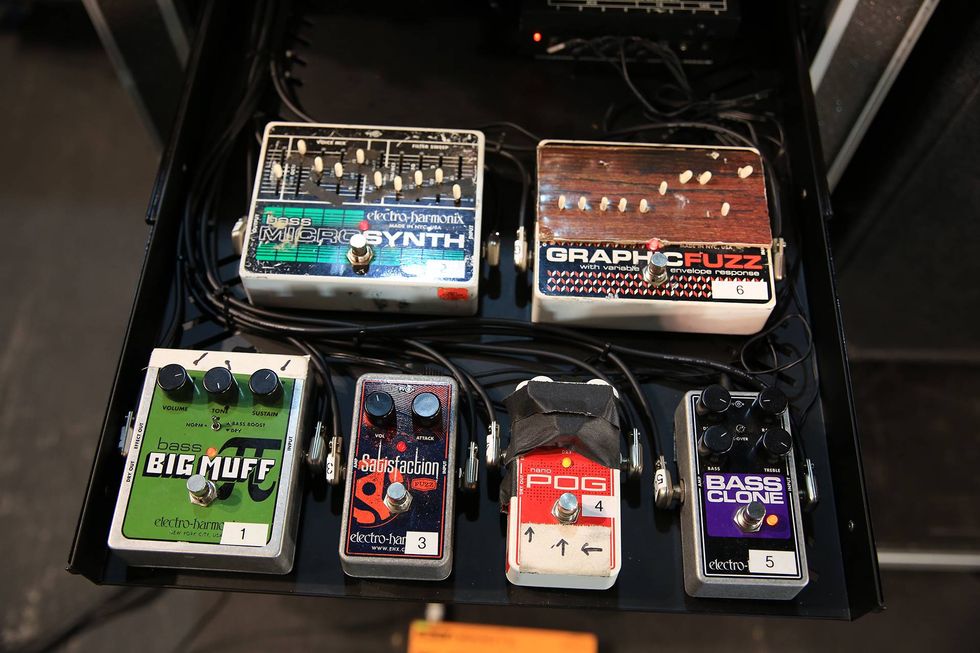
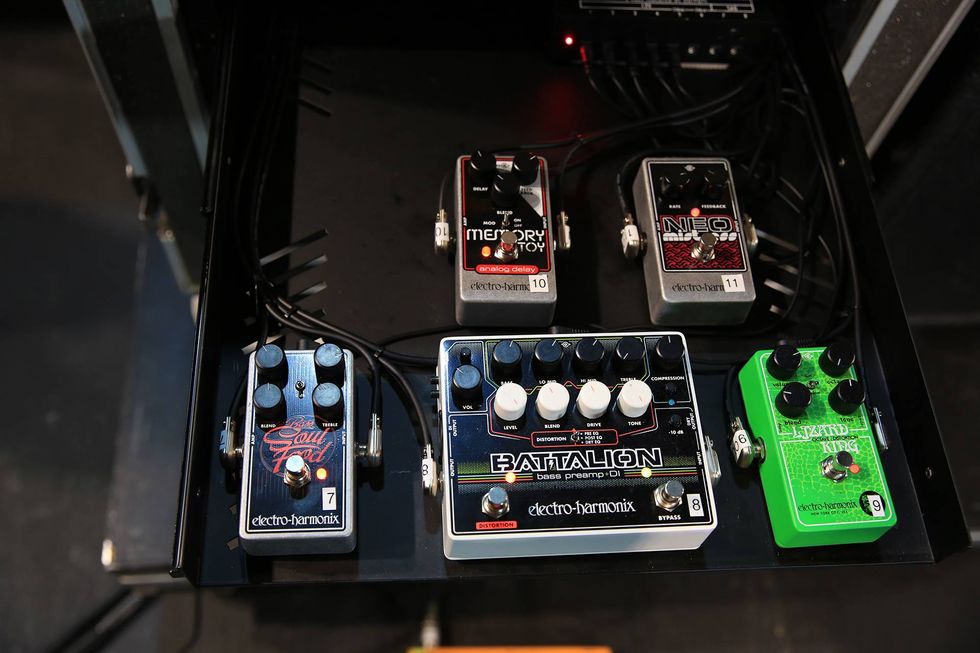
 Shop Scott's Rig
Shop Scott's Rig
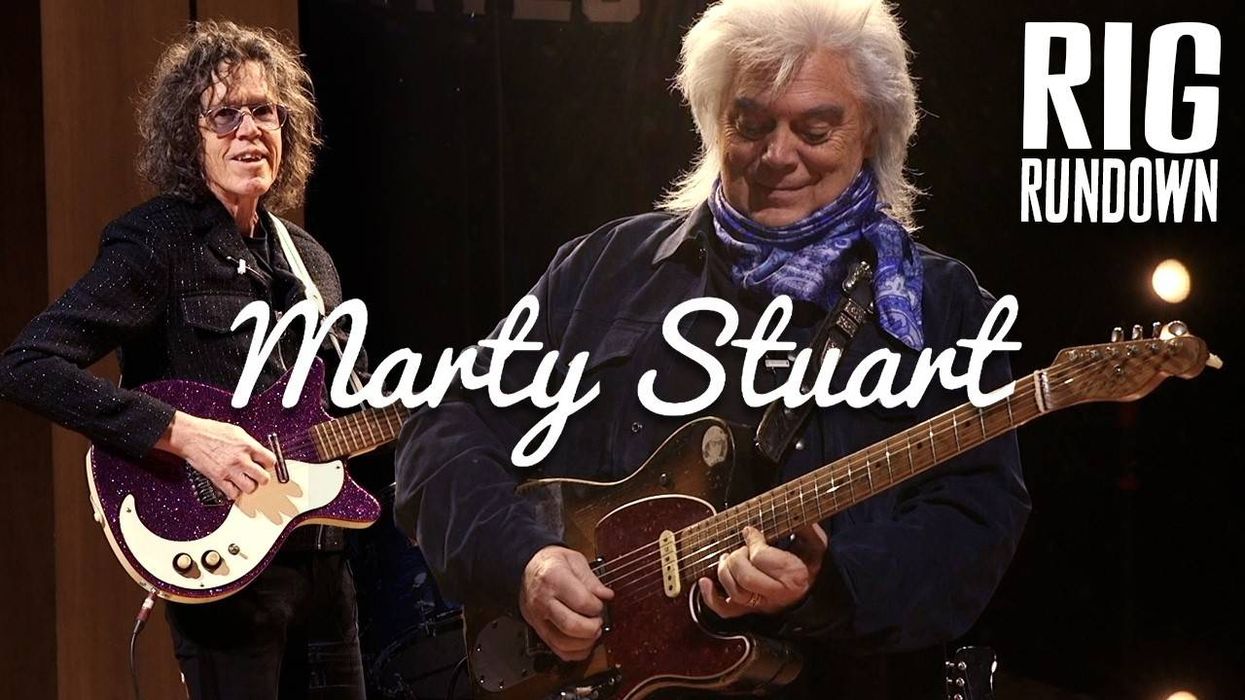
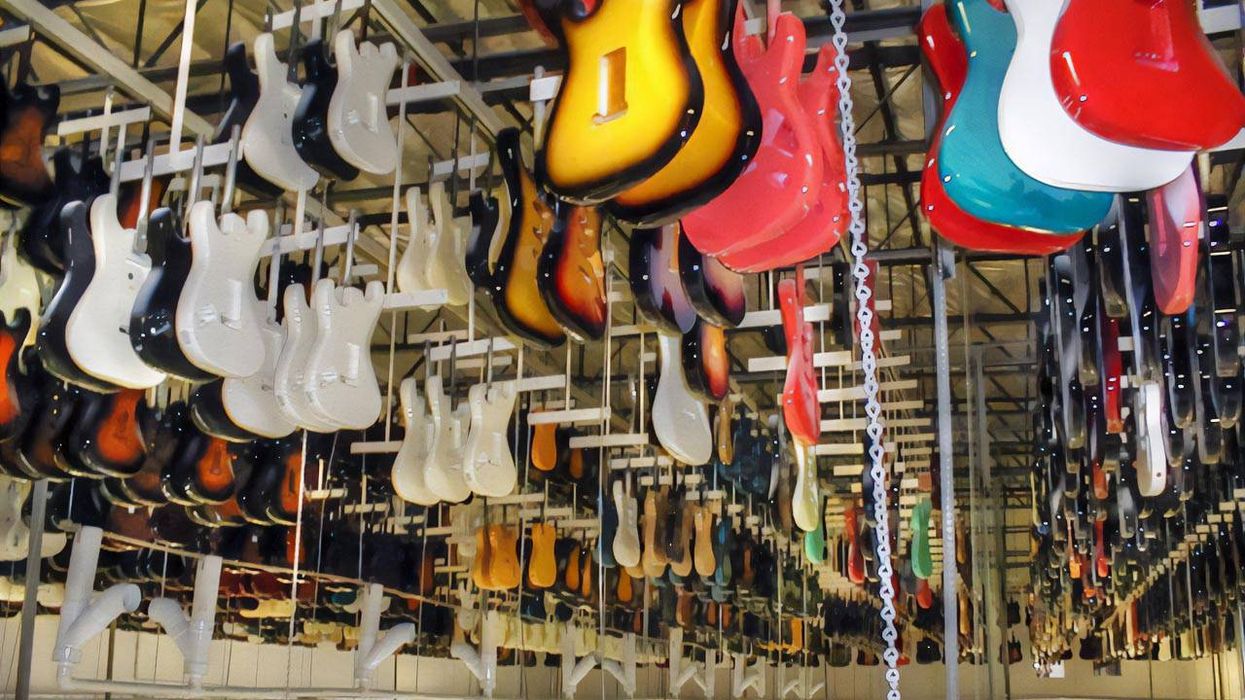
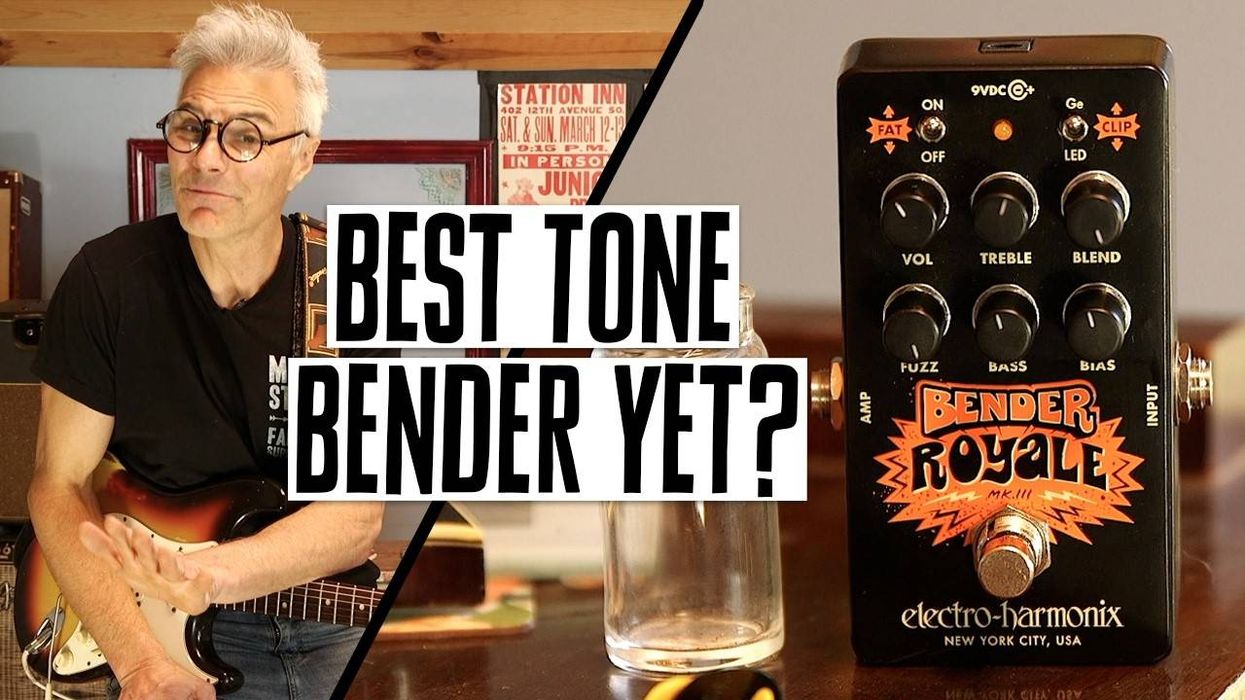
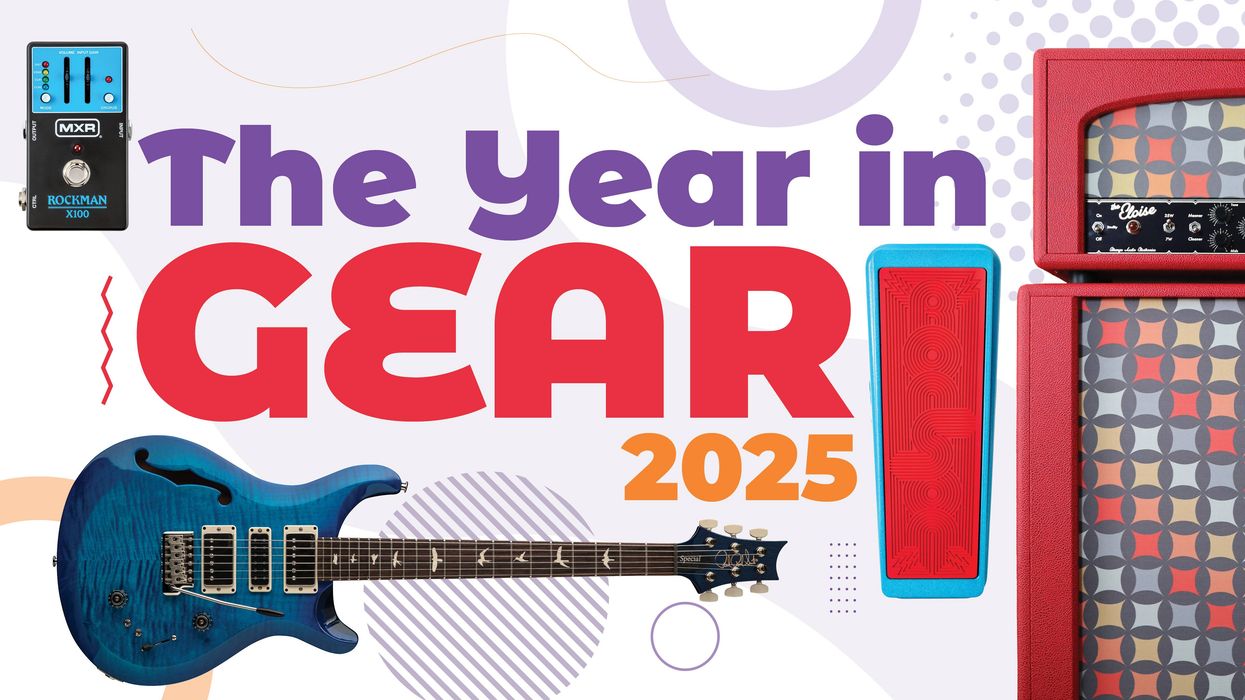
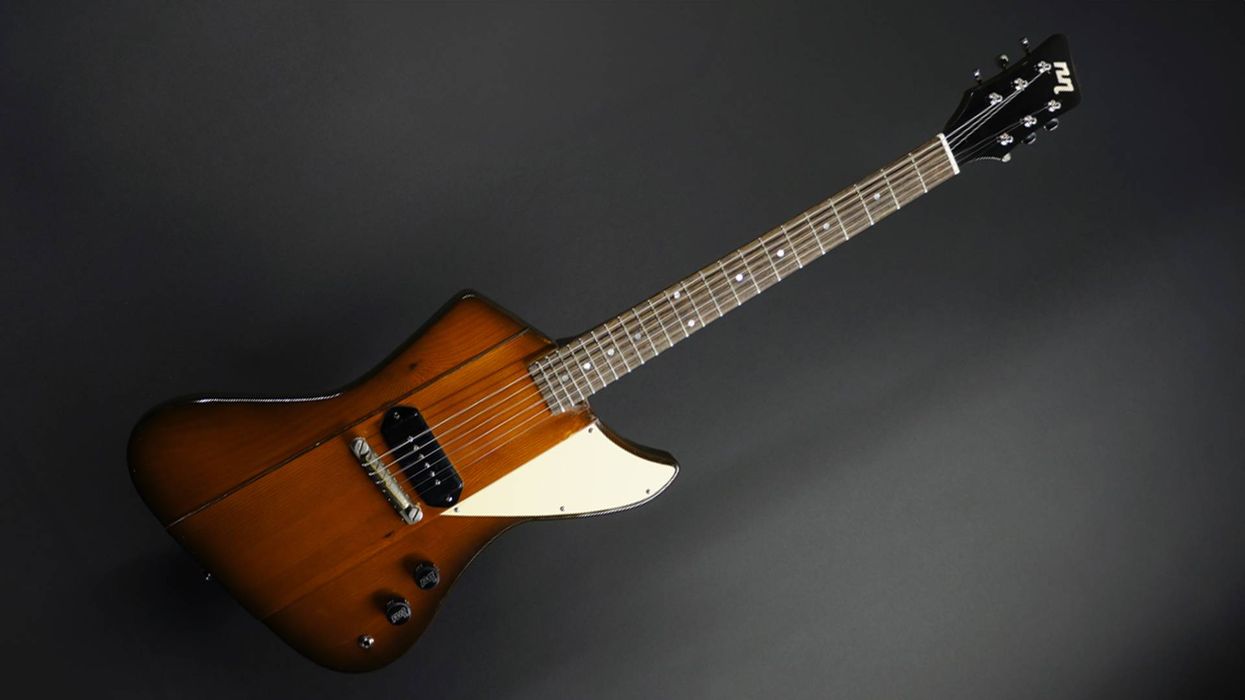
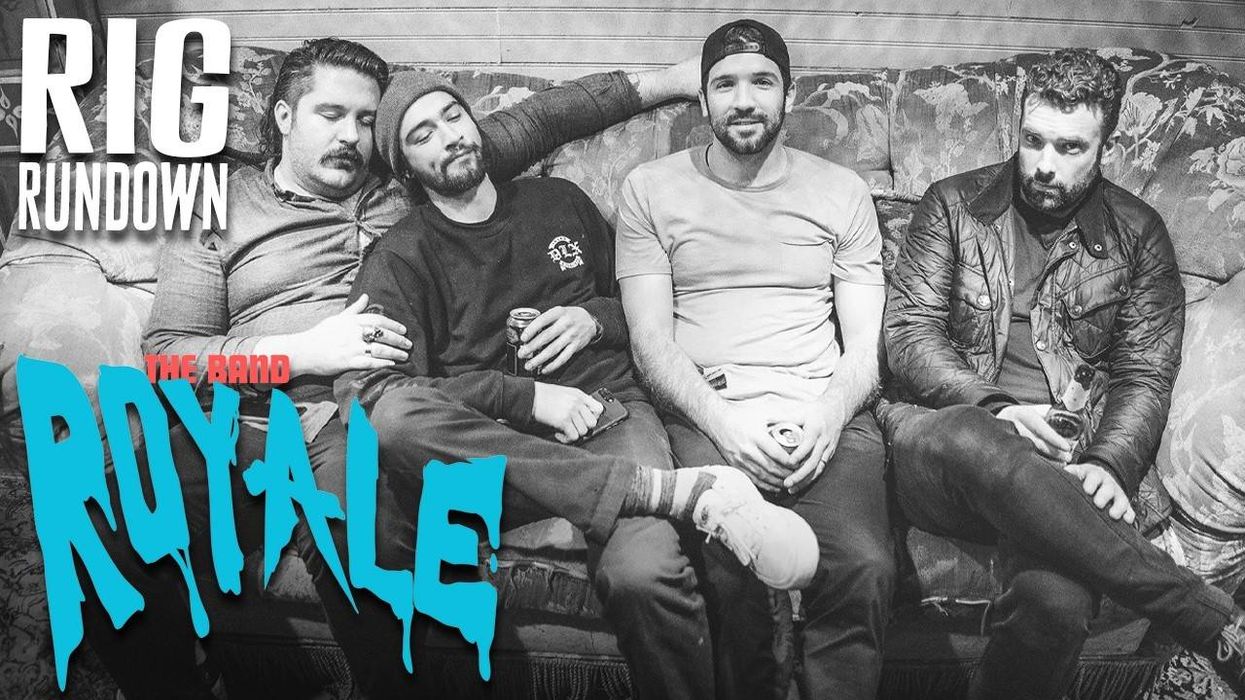
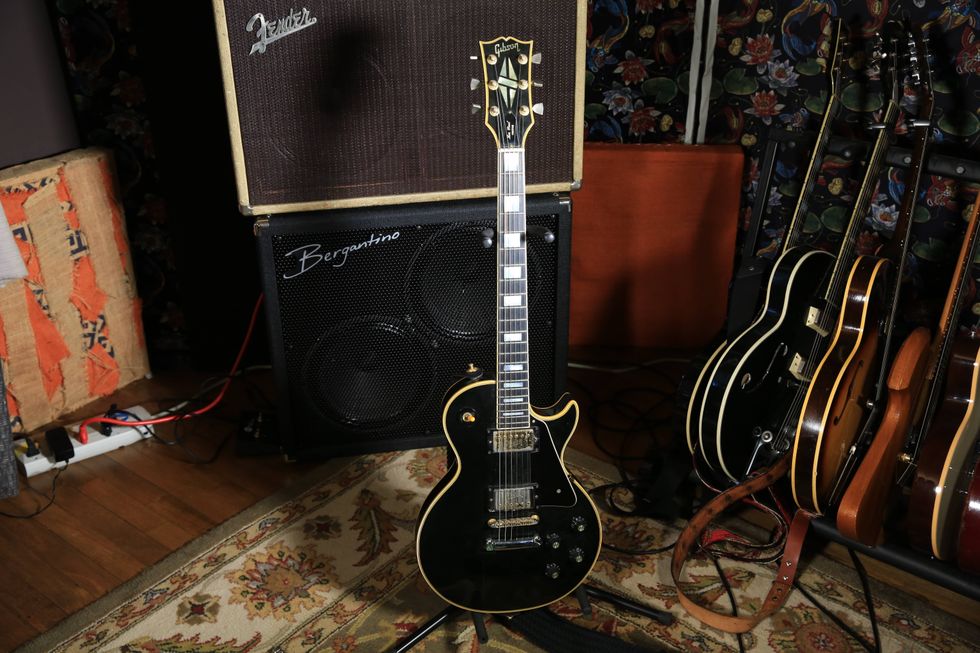
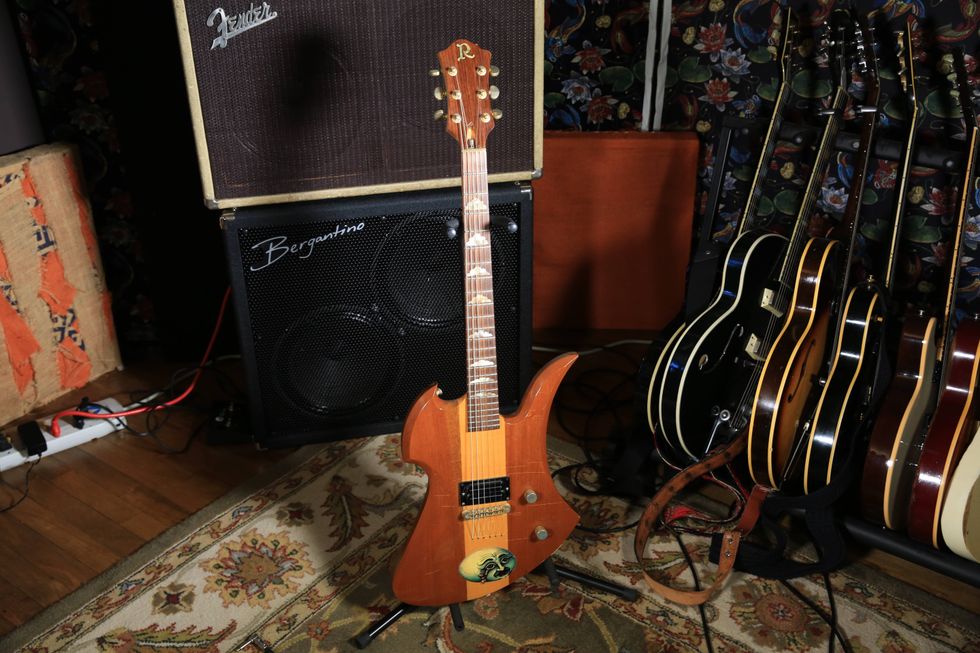
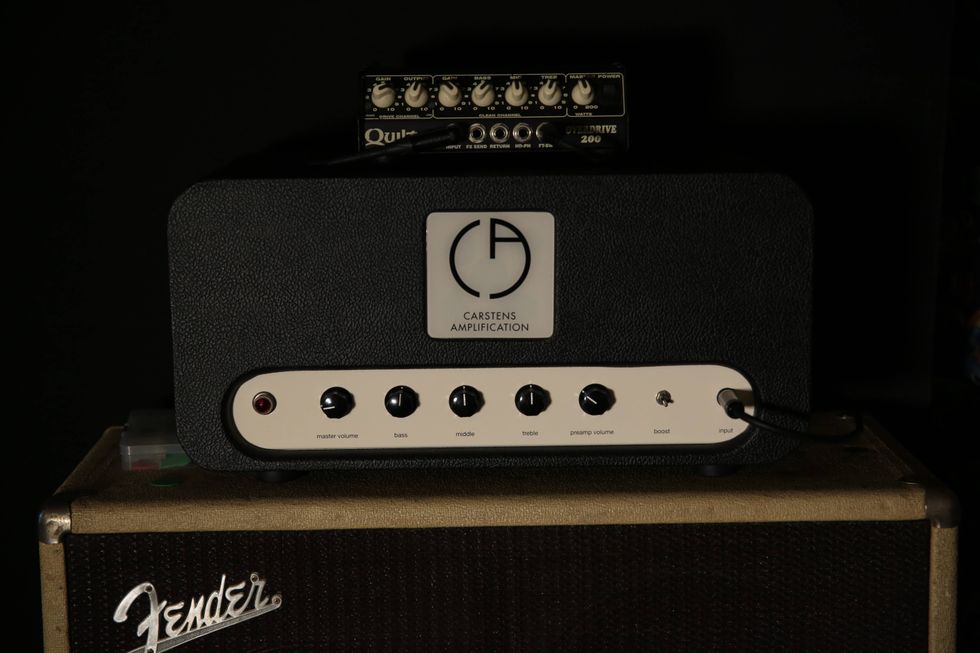
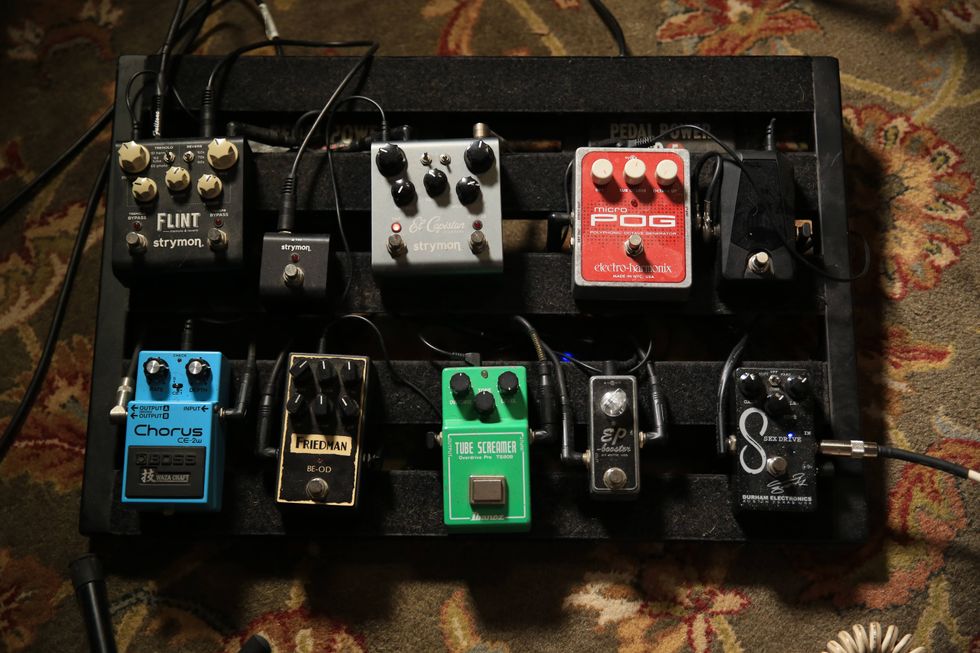
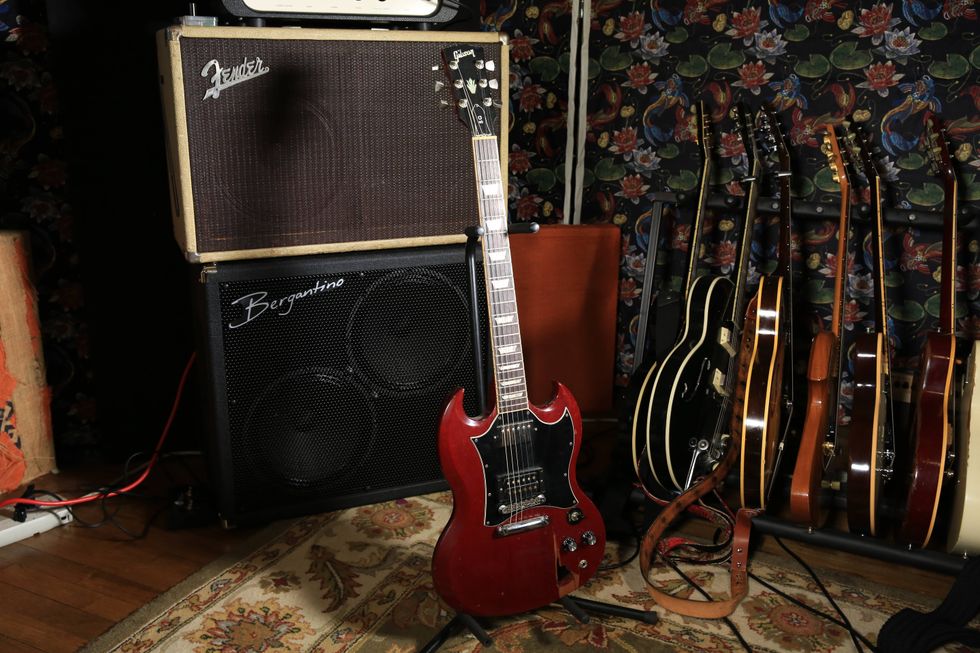
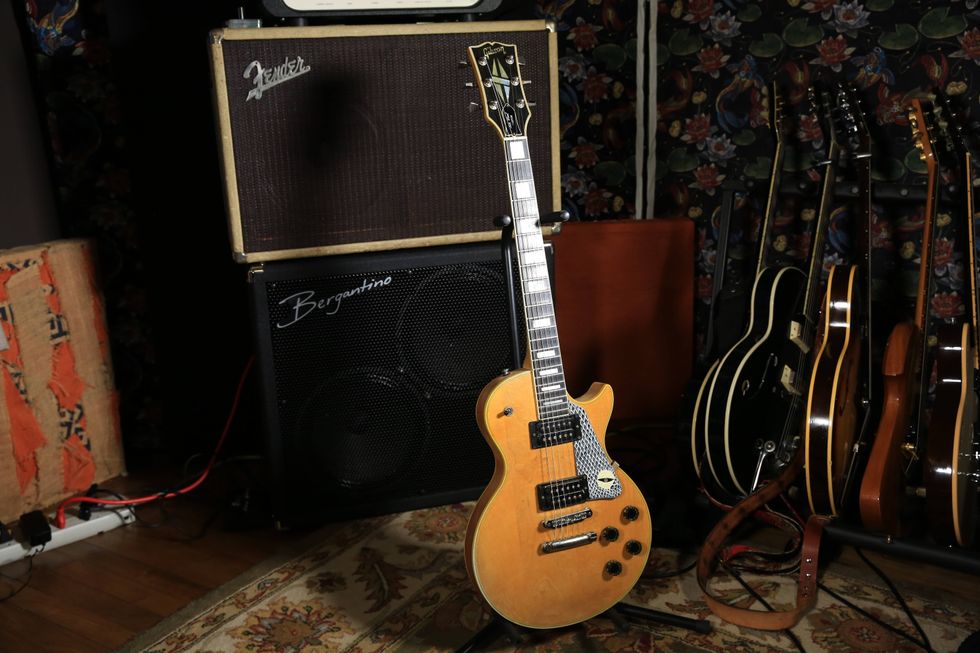
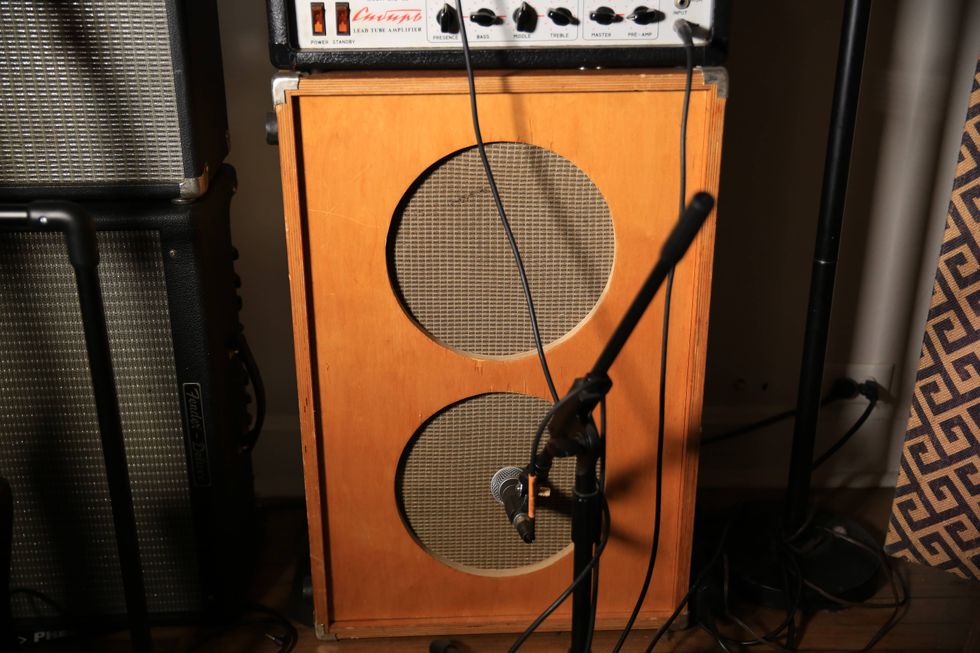
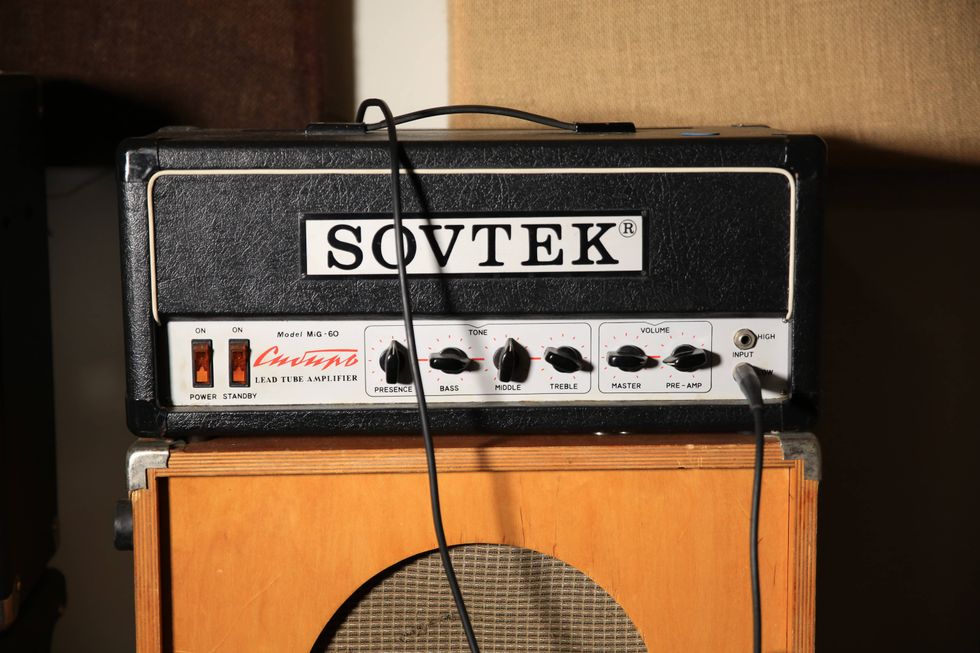 Zach loves his Sovtek Mig 60 head, which he plays through a cab he built himself at a pipe-organ shop in Denver. Every glue joint is lined with thin leather for maximum air tightness, and it’s stocked with Celestion G12M Greenback speakers.
Zach loves his Sovtek Mig 60 head, which he plays through a cab he built himself at a pipe-organ shop in Denver. Every glue joint is lined with thin leather for maximum air tightness, and it’s stocked with Celestion G12M Greenback speakers.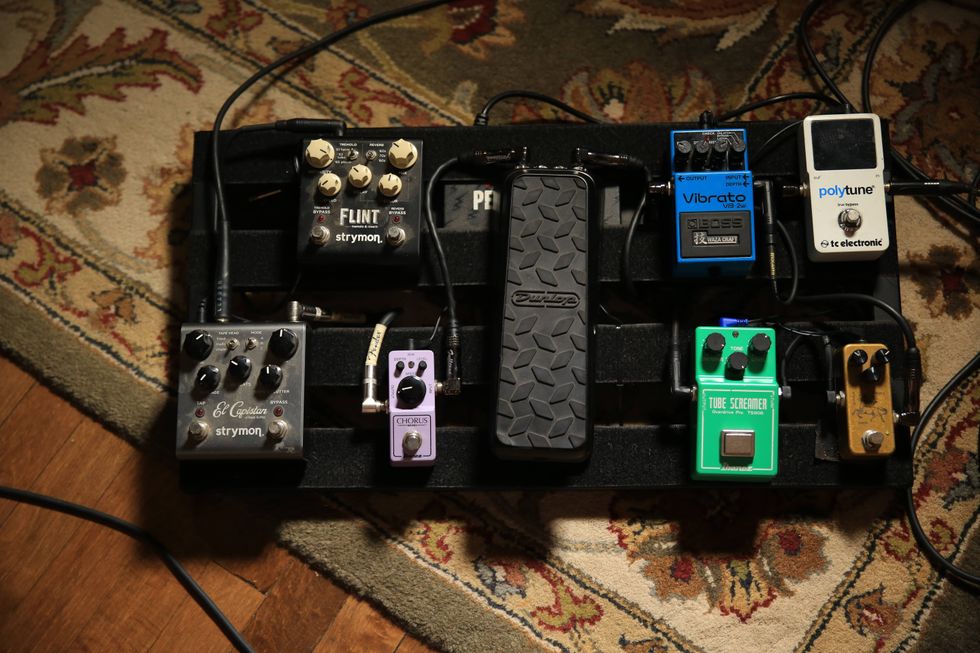
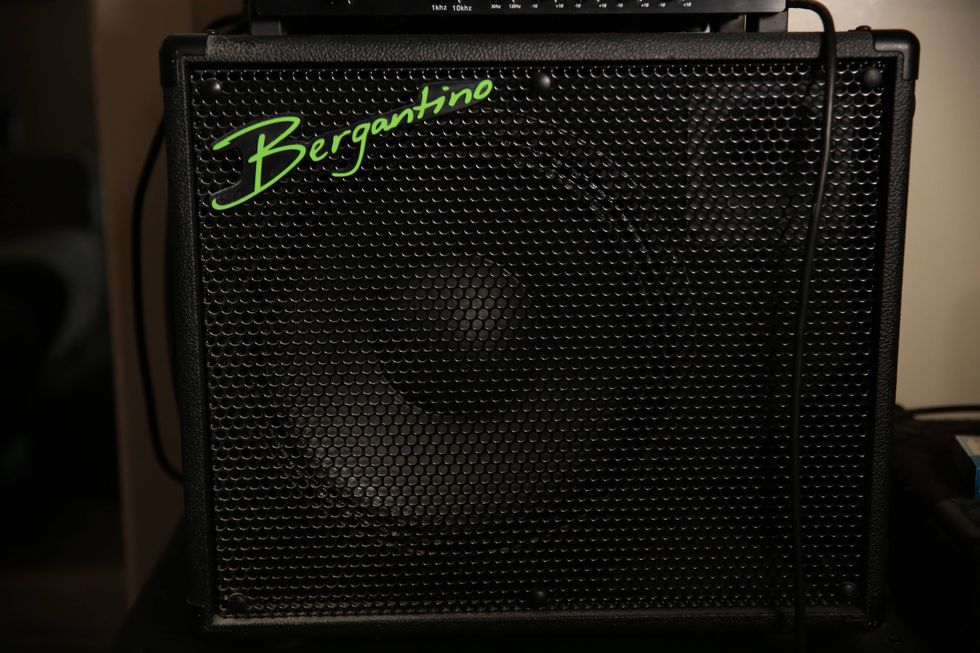
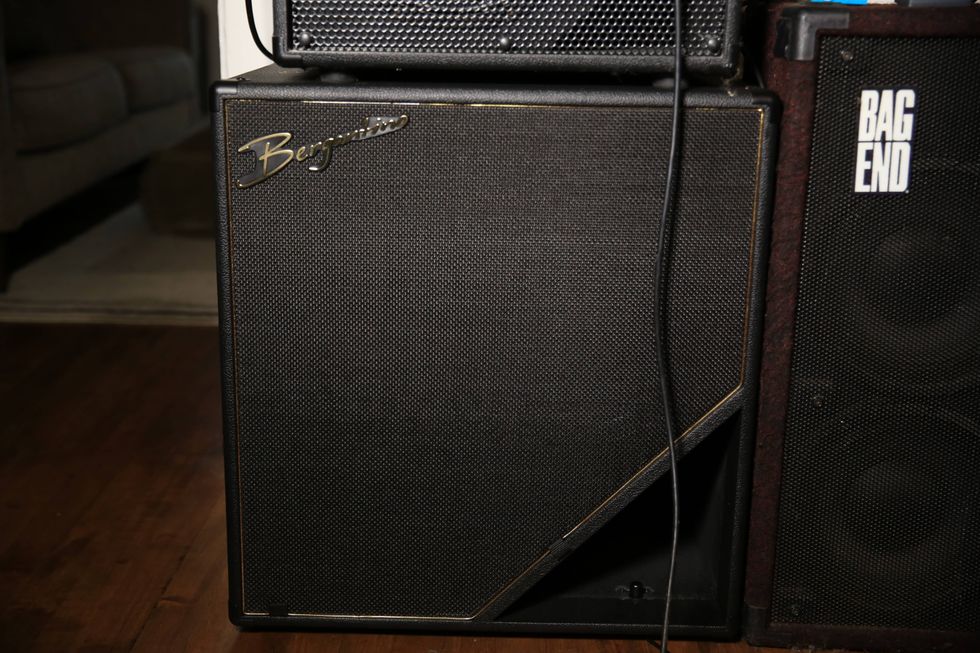
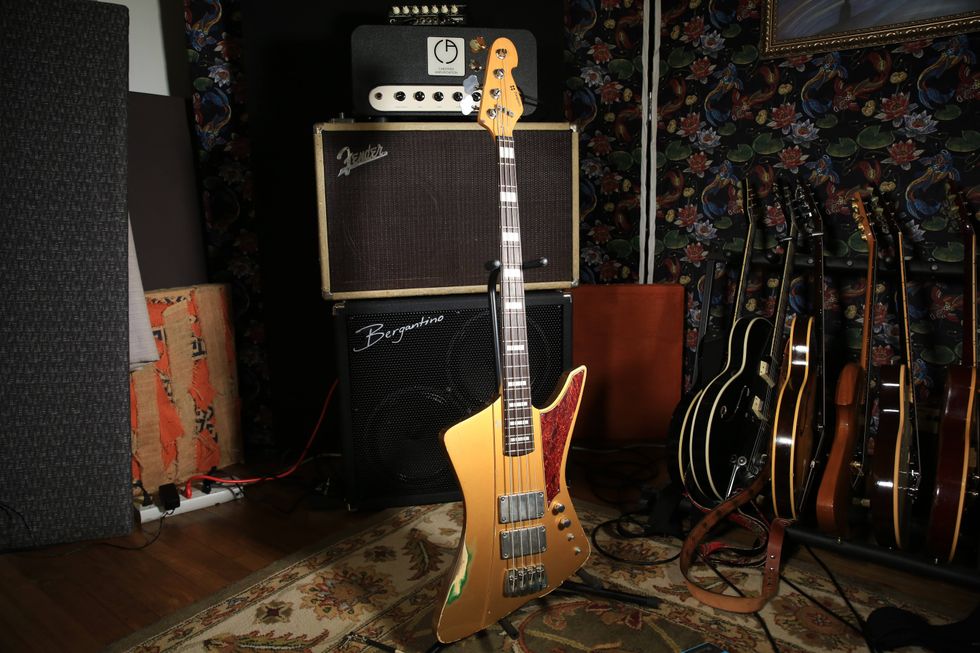
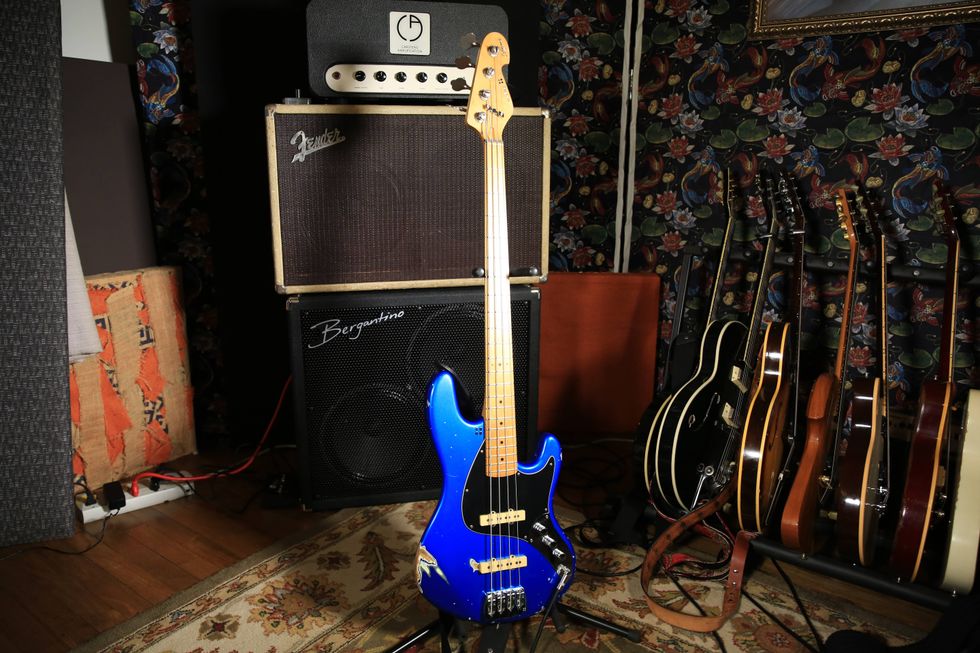
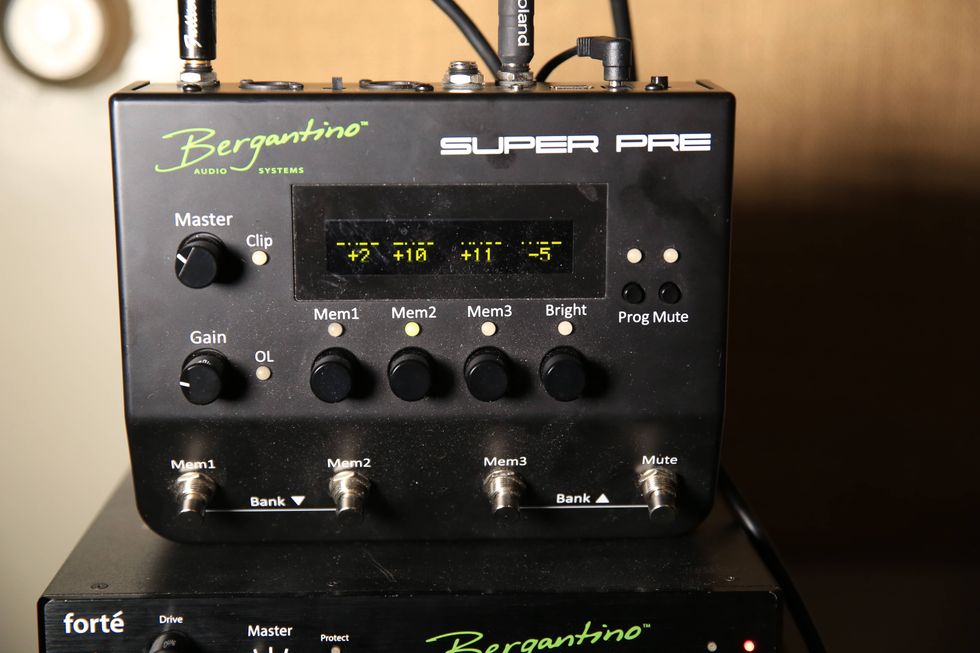
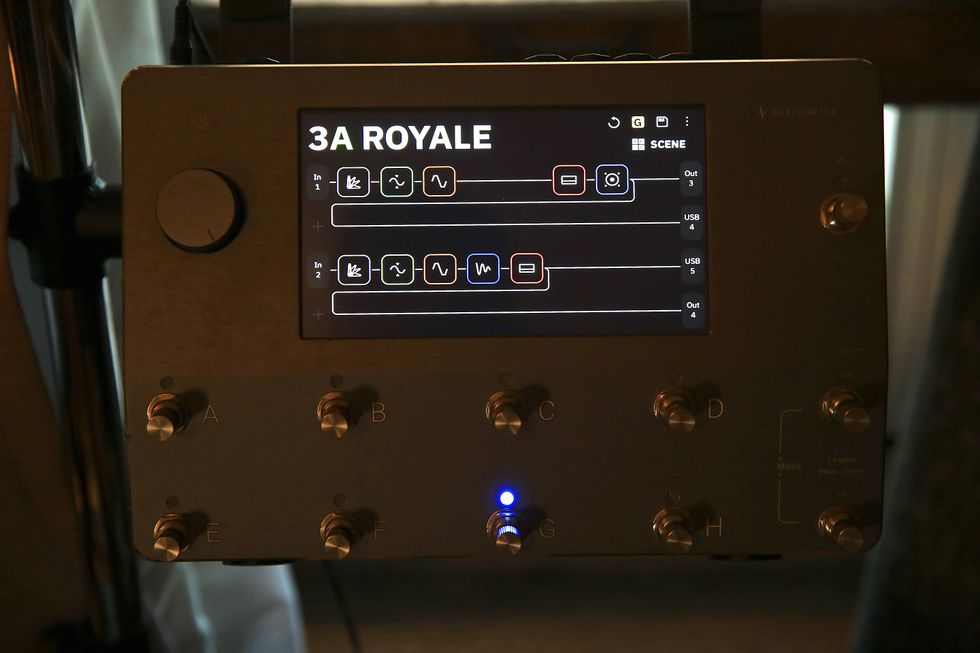

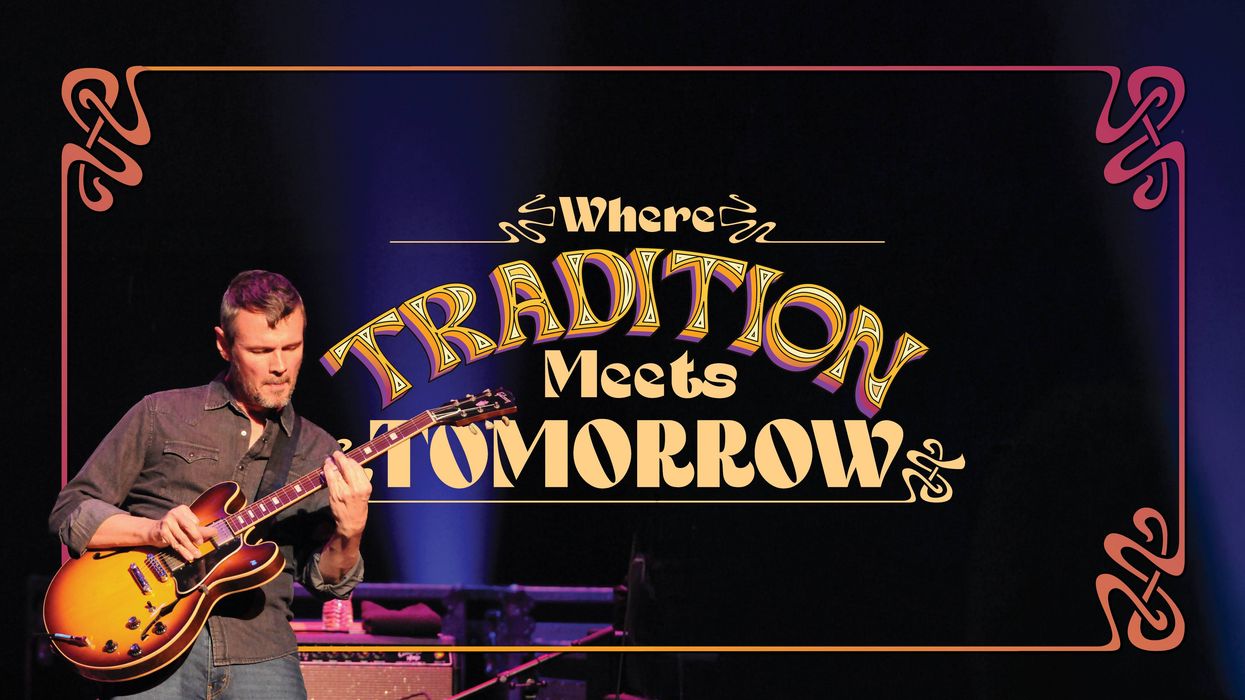
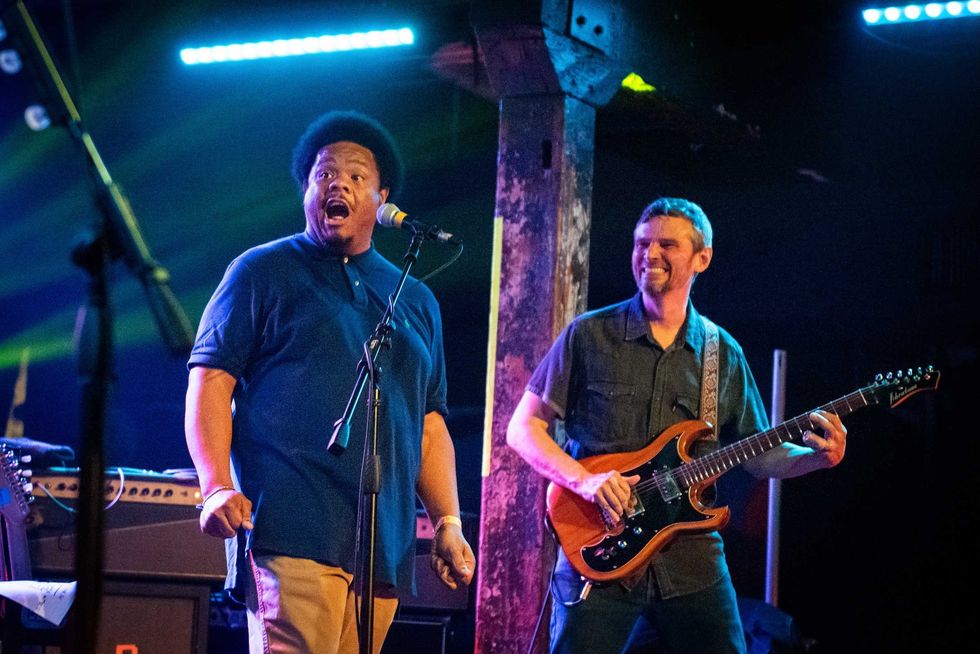
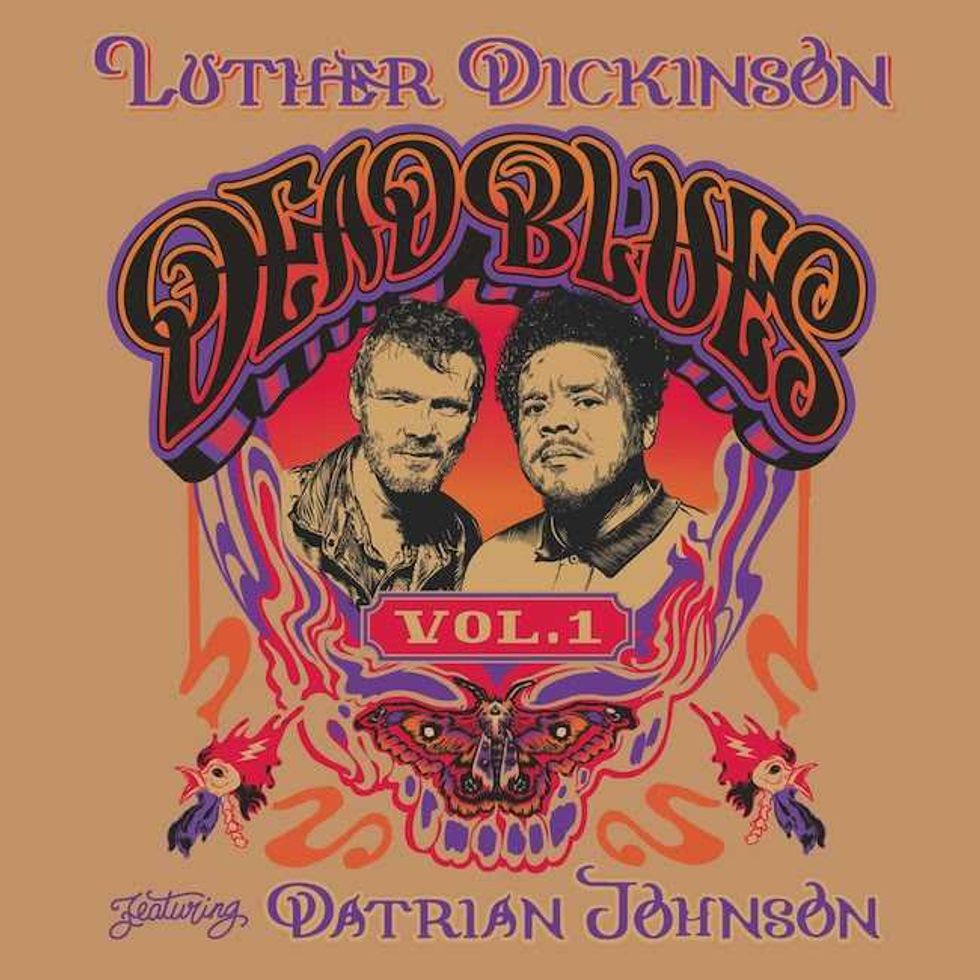
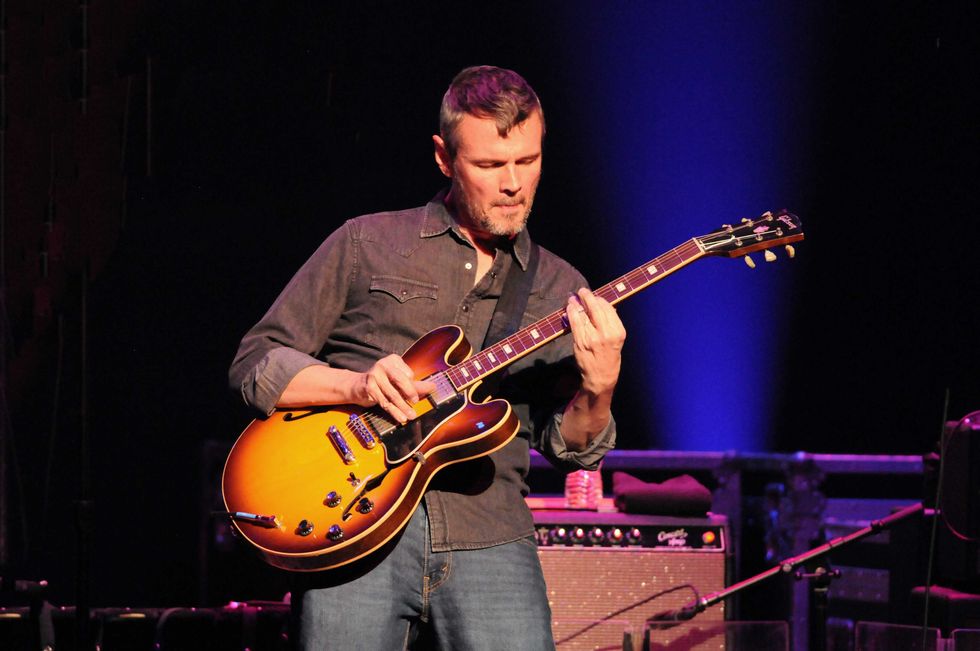
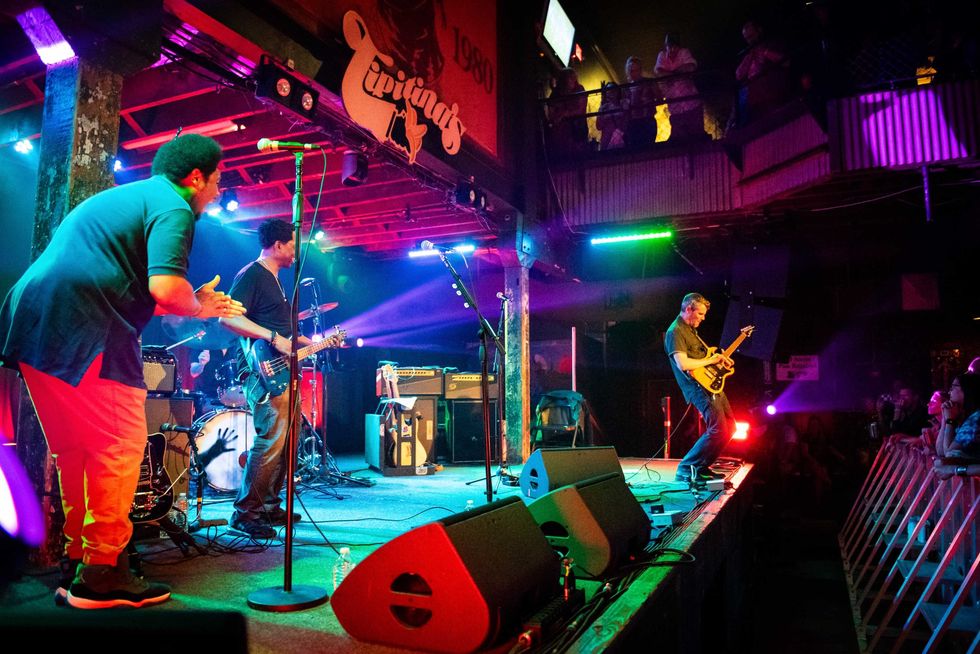
![Devon Eisenbarger [Katy Perry] Rig Rundown](https://www.premierguitar.com/media-library/youtube.jpg?id=61774583&width=1245&height=700&quality=70&coordinates=0%2C0%2C0%2C0)
